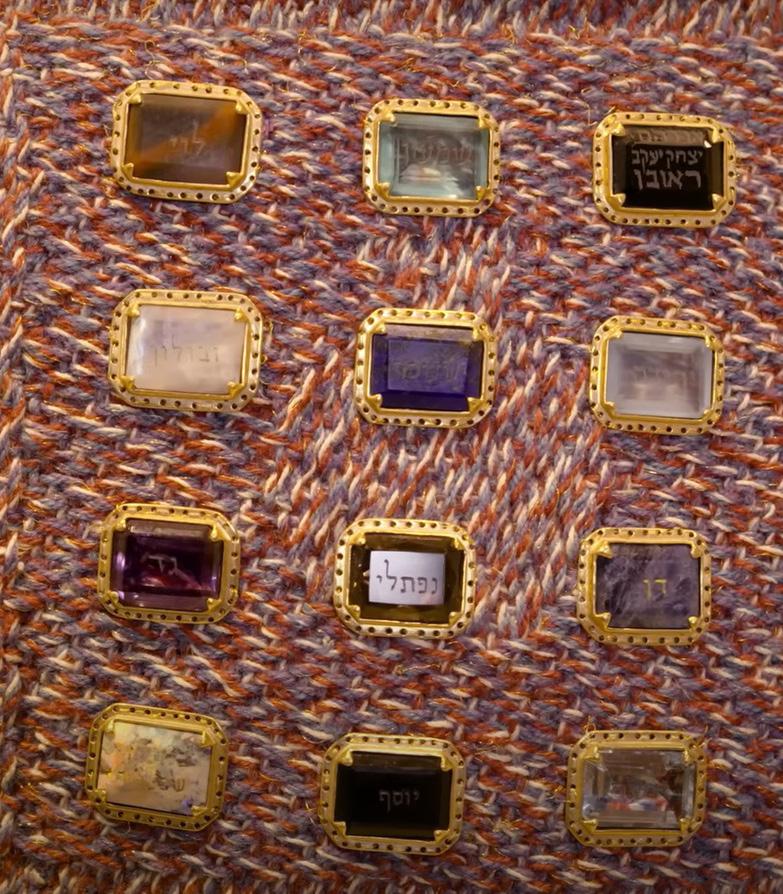




ADVERTISING & SPONSORSHIPS 02-560-9125 TorahTidbits.com OU ISRAEL 02-560-9100 YERUSHALAYIM SHABBAT
ZMANIM CANDLES 5:11 PM • HAVDALA 6:25 PM • RABBEINU TAM 7:05 PM ה"ב ISSUE 1557
16 2024 ▪ ד"פשת ׳ב רדא ׳ו ידוקפ תשרפ PARSHAT
׳י:ט״ל תומש ןבא ירוט העברא וב־ואלמיו
PARSHAT PEKUDEI
MAR.
PEKUDEI
Introduction Bishul Akum The prohibition According to Biblical law, completely kosher and cooked Jew is permitted. However, OU KASHRUT PAGE
Akum in
Jewish Home Rabbi Ezra Friedman Pg 40
SHABBAT CHAZAK
Bishul
a
The Shul in Herodian Rivi Frankel Pg 58
16
Aliya-by-Aliya
Rabbi
Rabbi
40
42
48
50
54
Rabbi Ezra Friedman
Rabbi Sam Shor
Rabbi Moshe Taragin
Rebbetzin Dr. Adina Shmidman
Rebbetzin Zemira Ozarowski
IMPORTANT REMINDERS
THIS WEEK'S COVER PHOTO

SHORT VORT
Bet/ Sun. night March 17
Last Opportunity to Say Kiddush Levana until: 15 Adar Bet/ Sun. night March 24

Taanit Esther is Thursday March 21. The fast ends at 6:09pm (Jerusalem)
YERES
)בל:טל(ושע ןכ השמ תא 'ה הוצ רשא לככ לארשי ינב ושעיו דעומ להוא ןכשמ תדובע לכ לכתו "And it was finished all the work of the tabernacle… and the children of Israel did according to all that G-d had commanded Moshe, so did they." (39:32)
Why is credit given to the entire community if only a fraction of the people were the artisans that did the actual work? The Or Hachaim (Rabbi Chaim ben Atar 1696-1743, Morocco-Jerusalem) answers that every individual performs his task according to his capabilities, yet the entire community derives the benefit. Similarly, no one person is subjected to all 613 commandments of the Torah. Some commandments are only applicable to Kohanim, others only to Levites, others to men and others just to women. Performance of all 613 commandments is only made possible by a concerted communal effort. Such a group effort allows the individuals to experience a far greater accomplishment than only on their own individual basis. Therefore, we can understand how the joint participation of all the Israelites in the building and completion of the tabernacle, laid down the model for all our communal work throughout Jewish history.
Shabbat Shalom
2 TORAH TIDBITS 1557 / PEKUDEI
Contents
Table of
Bishul
Akum in a Jewish Home
Simchat
Shmuel
44 The Shushan Horror Show
Moving in, Moving Up
Shabbat
Zemirot
Glimpsing the Tachash
The Shul in Herodian
Frankel
The Y-Files Weekly Comic Netanel Epstein
Torah 4 Teens by Teens Adele Nemirov // Akiva Fein See TorahTidbits.com > Individual Articles for this week's Dvar Torah by Rabbi Daniel Mann
Dear Torah Tidbits Family Rabbi Avi Berman
The Light of Adar –Despite the Darkness
Moshe Hauer
Rabbi Aaron Goldscheider 58
Rivi
60
62
04
08
Rabbi
12
Sedra Summary
Reuven Tradburks
Celebration or Rededication?
Dr. Tzvi Hersh Weinreb
On Jewish Character
Lord Jonathan Sacks zt"l 24 Probing the Prophets Rabbi Nachman Winkler 26 Beit Yisrael – Importance of Family Rabbi Shalom Rosner 28 Actual Accounting Rebbetzin Shira Smiles 32 Schedule OU Israel
...Who Did Miracles for Me Rabbi Judah Mischel
Kiddush Levana, 3 Days After Molad: 4 Adar Bet/ Wed. night March. 13 7 Days After Molad: 8 Adar
20
Rabbi
36
Earliest
by Zeev SchwartzTemple Institute
thanks to Nina Broder for sharing this photo with Torah Tidbits.
Photographed
Special
A
BY RABBI CHANOCH
R av, Beit Knesset Beit Yisrael, Yemin Moshe
CANDLE
All Times According to MyZmanim (20 mins before Sunset in most Cities; 40 mins in Yerushalyim and Petach Tikva; 30 mins in Tzfat and Haifa)
Daf Yomi:
69
OU Advocacy OU Israel MITCHEL R. AEDER, PRESIDENT OF THE ORTHODOX UNION Yehuda Neuberger, Chairman of the Board, Orthodox Union | Dr. Josh Penn, OU Kashrus Commission RABBI MOSHE HAUER, EXECUTIVE VICE PRESIDENT | RABBI JOSHUA M. JOSEPH, ED.D.
EXECUTIVE VICE PRESIDENT & CHIEF OPERATING OFFICER Rabbi Dr. Tzvi Hersh Weinreb, Exec. V.P. Emeritus
OU KOSHER: Rabbi Menachem Genack, CEO/Rabbinic Administrator OU Kosher | Rabbi Moshe Elefant, COO/Executive Rabbinic Coordinator ISRAEL: Rabbi Yissachar Dov Krakowski, Rabbinic Administrator | Rabbi Ezra Friedman, The Gustave and Carol Jacobs Center for Kashrut Education/ Deputy Rabbinic Administrator
Headquarters: 40 Rector St. 4th floor, New York, NY 10006 212-563-4000 website: www.ou.org
Editor Emeritus: Phil Chernofsky
Editor: Rabbi Aaron Goldscheider | aarong@ouisrael.org
Advertising: Ita Rochel | 02-5609125 or ttads@ouisrael.org
Website: www.torahtidbits.com
Not getting enough TTs? Too many? None at all?
Contact our DISTRIBUTION 050-577-2111 • ttdist@ouisrael.org
JERUSALEM
Ranges 11 days Wed - Shabbat
Oct x - x / x - x Cheshvan
Earliest Tallit and Tefillin x:xx - x:xx
Sunrise x:xx - x:xx
Sof Zman Kriat Shema x:xx - x:xx
Sof
Magen Avraham x:xx - x:xx
Sof Zman Tefila
Sof Zman Tefila x:xx-x:xx (According to the Gra and Baal HaTanya)
(According to the Gra and Baal HaTanya)
- 9:43
Chatzot (Halachic Noon)
- 11:45
Chatzot (Halachic Noon) x:xx - x:xx
Mincha Gedola (Earliest Mincha) x:xx - x:xx
Mincha Gedola (Earliest
Plag Mincha x:xx - x:xx
Sunset (Including Elevation) x:xx - x:xx
Seymour J. Abrams • Orthodox Union Jerusalem World Center • Avrom Silver Jerusalem College for Adults • Wolinetz Family Shul • Makom BaLev • Birthright • Yachad • NCSY in Israel • JLIC in Israel • Camp Dror • Pearl & Harold M. Jacobs ZULA Outreach Center • The Jack Gindi Oraita Program • OU Israel Kashrut
STUART HERSHKOWITZ, PRESIDENT OU ISRAEL
Zvi Sand / Yitzchak Fund: Former Presidents, OU Israel | Rabbi Emanuel Quint z”l, Senior Vice President | Prof. Meni Koslowsky, Vice President
VAAD MEMBERS:
Michael Elman | Yonatan Frankel | Yitzchak Fund | Daniella Hellerstein | Stuart Hershkowitz | Jeremy Lustman | Meir Raskas | Atara Reichel | Zvi Sand | Norman Schmutter | Mark Schneider | Esther Williams
RABBI AVI BERMAN, EXECUTIVE DIRECTOR, OU ISRAEL
David Katz, CFO, OU Israel | Natan Kandler, COO, OU Israel | Chaim Pelzner, Director of Programs, OU Israel | Rabbi Sam Shor, Director of Programs, OU Israel Center | Rabbi Sholom Gold zt"l, Dean, Avrom Silver Jerusalem College for Adults 22 Keren HaYesod <> POB 1441 <> Jerusalem 9101032
phone: (02) 560 9100 | fax: (02) 561-7432
email: office@ouisrael.org
website: www.ouisrael.org
Founders and initial benefactors of the OU Israel Center: George and Ilse Falk a"h
Torah Tidbits and many of the projects of OU Israel are assisted by grants from THE JERUSALEM MUNICIPALITY

OU Israel, Torah Tidbits does not endorse the political or halachic positions of its editor, columnists or advertisers, nor guarantee the quality of advertised services or products. Nor do we endorse the kashrut of hotels, restaurants, caterers or food products that are advertised in TT (except, of course, those under OU-Israel hashgacha). Any "promises" made in ads are the sole responsibility of the advertisers and not that of OU Israel, the OU Israel Center , Torah Tidbits.
OU ISRAEL CENTER 3
TIMES
AND HAVDALA
LIGHTING OTHER Z'MANIM
OU Kashrut NCSY Jewish Action JLIC NJCD / Yachad / Our Way OU West Coast OU Press Synagogue/Community Services
Kidushin
March 13 - 23 / 3 - 13 Adar Bet 5:01 - 4:48 5:51 - 5:39
Kriat Shema 8:50 - 8:42
8:14
Zman
Magen Avraham
- 8:06
9:49
11:48
12:18
12:16 Plag
4:31
4:36
5:50
5:57 Daf Yomi: Bava Metzia 17 VAYIKRA PEKUDEI HAVDALA CANDLES HAVDALA CANDLES 6:30 5:16 6:25 5:11 Yerushalayim / Maale Adumim 6:32 5:34 6:27 5:29 Aza Area (Netivot, Sderot et al) 6:31 5:35 6:26 5:30 Beit Shemesh / RBS 6:30 5:32 6:25 5:27 Alon Shvut 6:31 5:33 6:26 5:28 Raanana / Tel Mond / Herzliya / K. Saba 6:31 5:33 6:26 5:28 Modiin / Chashmonaim 6:31 5:33 6:26 5:28 Netanya 6:31 5:33 6:26 5:29 Be’er Sheva 6:31 5:33 6:26 5:28 Rehovot 6:31 5:16 6:26 5:11 Petach Tikva 6:30 5:32 6:25 5:27 Ginot Shomron 6:31 5:23 6:26 5:18 Haifa / Zichron 6:29 5:31 6:24 5:27 Gush Shiloh 6:32 5:33 6:27 5:29 Tel Aviv / Givat Shmuel 6:30 5:36 6:25 5:31 Givat Zeev 6:30 5:32 6:25 5:27 Chevron / Kiryat Arba 6:32 5:34 6:27 5:30 Ashkelon 6:31 5:33 6:26 5:28 Yad Binyamin 6:29 5:25 6:24 5:20 Tzfat / Bikat HaYarden 6:29 5:30 6:23 5:25 Golan 6:31 5:32 6:26 5:26 Nahariya/Maalot 6:30 5:32 6:25 5:26 Afula Rabbeinu Tam (Jerusalem) - 7:05 PM • Next Week - 7:10 PM
Mincha)
-
Mincha
-
Sunset (Including Elevation)
-

DEAR TORAH TIDBITS FAMILY
DEAR TORAH TIDBITS FAMILY
RABBI AVI BERMAN Executive Director, OU Israel aberman@ouisrael.org
Why do we have mitzvot on Purim that focus on showing other Jews how much we care about them - mishloach manot and matanot le’evyonim? Rabbi Shlomo HaLevi Alkabetz, most known for composing Lecha Dodi, offers a profound answer in his commentary to Megillat Esther, Manot HaLevi (on Esther 9:16). He suggests that the holiday of Purim seeks to contradict and counteract what Haman called us in speaking to Achashverosh (Esther 3:8), “There is a certain nation who is mefuzar u’mefurad, scattered and dispersed.” Haman tried to use descriptions of discord and disunity as a means to destroy Klal Yisrael. These are people, he declared to Achashverosh, who do not support each other, help each other, care about each other. “Ein shoveh le’hanicham” - “It’s not worthwhile for the king to leave them be.” To show how wrong Haman is, explains Rabbi Alkabetz, we have mitzvot involving brotherhood, camaraderie, and unity among the Jewish people. We give each other gifts of food, have lavish seudot, and we show each other how united we are.
Something I’ve written about in this
RABBI AVI BERMAN Executive Director, OU Israel
column many times is that before this Sukkot and Simchat Torah, we unfortunately saw separation and argument in Klal Yisrael. While some believed these rifts were very real and unbridgeable chasms in the nation, and while others saw it as merely a sign of family who sometimes argue internally, either way, it did not look good. But the events of October 7th changed our perspectives. It showed us that underneath it all, we are together, as one nation.
As part of my job, I often fly to North America. This past trip, I flew El Al, of course. El Al has really stepped up to the plate, and I think we now know why El Al is so important to Israel. When all the other airlines stopped flying to Israel, El Al not only continued to fly, but even increased its flights to make up for the other airlines leaving. My most recent trip gave me two beautiful personal experiences that I’d like to share with you because they demonstrate how close we really are. They may seem to be disconnected, but follow me through them, because I think they share an important theme.
The OU Israel family wishes heartfelt condolences to Cindy Wiesel and family on the passing of her
GRANDFATHER z”l
Everyone has their own minhagim when they fly. Some read books and others listen to music. I try to sleep for as much of the flight as I can. Several hours into the flight, I woke up and saw it was time for Shacharit. As I stood up to get my Tallit and Tefillin bag from the overhead compartment, I noticed that two rows behind me was sitting Rabbi Dr. Aharon Adler, one of OU Israel’s distinguished lecturers. I immediately turned and
4 TORAH TIDBITS 1557 / PEKUDEI
םילשוריו ןויצ ילבא ראש ךותב םכתא םחני םוקמה
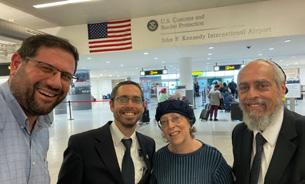
shook his hand, “Rabbi Adler, how are you?” He looked up at me. “There’s someone looking for you!” “Who?”, I asked him. He said, “A man by the name of Eitan came looking for you.” I asked him where this Eitan was sitting in order to find him. Rabbi Adler smiled, “You can’t go to him. His seat is in the cockpit. He’s flying the plane because he’s the pilot!” He explained that Eitan is his son, a pilot, and was drafted from the reserves to serve in Gaza. He just finished his reserves and he was now back to his job as a pilot for El Al. When Eitan found out that I was on the plane, Rabbi Adler said, he came looking for me, but I was asleep. I told Rabbi Adler that I’d try to meet up with him when we landed, and I went back to my seat to daven. After we landed, we ended up finding each other, and I was happy to take a selfie with the pilot and his parents, Rabbi and Rebbetzin Adler.
Something else happened on the flight that caught my attention. As we were about to land, the head of the flight attendants, Tamar, went on the loudspeaker to announce that the plane was about to land, and the instructions related to that. She also said, “If there are any IDF soldiers on this plane, know that we all salute you.” She said it in both English and Hebrew, so everyone could hear and understand what she was saying. She continued, “All of our soldiers, and all of our security personnel,

who have spent the last five months keeping us safe, every single day, protecting our Homeland, the staff, and I’m sure everyone on this plane, are praying for you, for your success and your wellbeing.
For years, I’ve heard the El Al slogan, “Hachi babayit ba’olam” - “the most at home in the world,” saying that being on an El Al plane is like another home away from home. After these two stories, it was less of a slogan and so much more real for me. The person sitting and flying the plane is someone who left his job as a pilot to fight in Gaza and protect Israel. The head of the service staff on this flight prayed together with everyone on the plane for the wellbeing of our brave soldiers. To me, that was such a poignant and important message of where the Jews are today.
As we enter Adar, the message I have for you is that we are all one nation. There is nothing that can separate us. This is a time that we have to show the world, and especially the Hamans of the world, that we stand united. My flight and these two experiences reminded me that Am Yisrael Chai and that Am Yisrael Echad. The
Condolences to the family of Rabbi Moshe
Flumenbaum z”l of HaSofer on his passing
OU ISRAEL CENTER 5
םילשוריו ןויצ ילבא ראש ךותב םכתא םחני םוקמה
Jewish people live, and the Jewish people are one. Together, we will emerge safe, and we will win.
On behalf of myself and the entire OU Israel team, I want to personally thank and welcome back two of our incredible staff who recently returned from long milluim services in Gaza and Lebanon – Kobi Ziat (OU Israel Youth Centers) and Rabbi Yosef Ginsberg (NCSY Israel).
On a different note, on behalf of myself and the OU, I also want to congratulate Mayor Moshe Lion on his re-appointment and thank him for visiting OU global headquarters in New York last week. The partnership we have and will continue to have is very much valued. The Mayor had the opportunity to learn more about the work the OU is doing on a global level. We look forward to a continued strong relationship with the Mayor furthering our joint goal of strengthening Yerushalayim Ir HaKodesh in general and our work in Yerushalayim with English-speaking olim as well as at-risk teens in particular.
Wishing you all an uplifting and inspiring Shabbat, Rabbi Avi Berman Executive Director, OU Israel aberman@ouisrael.org










6 TORAH TIDBITS 1557 / PEKUDEI Sofas Cleaning Carpet Cleaning Mattress And more cleaning services Curtains Polish 050-445-5975 info.talclean@gmail.com F O R M O R E I N F O R M A T I O N , V I S I T W W W T A L C L E A N C O I L Contact us: Understand yourself and let your loved ones know you. Write Your Memoir in a friendly, supportive atmosphere. Suitable for everyone, including "non-writers" Join us on ZOOM: Tuesdays 10:30-12 Led by prize-winning author Carol Ungar First class free For the link, Whatsapp: 0534639983 or email ungar.carol@gmail.com
המלש האופר הניאר תב הרוא









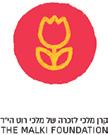




OU ISRAEL CENTER 7 MASSAGE THERAPIST & FITNESS TRAINER 052.673.3704 I www.andyhealth.com | jerusalemmyhome@hotmail.com TUVIA ANDY HAAS BALANCE and FALL-PREVENTION SPECIALIST for OLDER ADULTS Maintain Healthy Bones and Muscles Decrease Stiffness and Joint Pain Increase Strength! Stay Independent! True wholesaler from the diamond boursa with over 25 years experience member diamond dealers club Engagement Rings ∙ Stud Earrings Pendants ∙ Tennis Bracelets 050-573-9061 jeffmor36@gmail.com www.JeffMorDiamondJewelry.com kerenmalki.org 02-567-0602 Keren Malki empowers families of children with special needs in Israel to choose home care. Donations are tax-approved in Israel, US and UK. Honoring the memory of Malka Chana Roth ד”יה 1985-2001, killed in the Sbarro bombing.
 FROM THE DESK OF RABBI MOSHE HAUER OU EXECUTIVE VICE PRESIDENT
FROM THE DESK OF RABBI MOSHE HAUER OU EXECUTIVE VICE PRESIDENT
The Light of Adar –Despite the Darkness
“LaYehudim haysa orah v’simcha, The Jews experienced light and joy.”
We have entered the second month of Adar, a time when our feelings of joy are expected to grow. That is not easy, as we are still reeling from October 7th, the continued captivity of the hostages, the ongoing war in Gaza and its many losses, and the international tidal wave of antisemitism. Joy seems hard to come by.
What about orah, light? What does it mean when the Megillah says that the redemption brought with it light to the Jews? And what are the points of light that we can identify in our current period of darkness?
The answer can be found in the Siddur, in our daily davening. When we seek peace, we ask of Hashem to “bless us all together as one b’or panecha, with the light of Your face, for by that light You have granted us a living Torah and love of kindness, charity, blessing, mercy, life and peace.” We experience G-d’s light and radiance when we are as one, peaceful and unified, and that unity is in turn the result of our living and acting upon the Torah’s highest life-impacting values of kindness and charity.
Two years ago, when Russia attacked Ukraine, Natan Sharansky shared a remarkable reflection.
When I was younger, we knew nothing
about Judaism other than the antisemitism and hate that we experienced. No one seeking admission to the university ever tried to change their ethnic designation from Russian to Ukrainian as it would not have made a difference. But if they were identified as a Jew, they would make every effort to change that in order to open the door of opportunity.
This is something I recalled this week when I saw thousands standing at the borders trying to escape the tragedy in Ukraine. They stand at the border day and night, and there is one word that would help them get out: ‘Jew’. If you are Jewish, there is someone on the other side of the border looking for you, giving you a chance to get out.
The world has been overturned. When I was a child, ‘Jew’ was a word with negative implications, and no one envied us. Today on the borders of Ukraine ‘Jew’ is a word that describes someone with a place to go, with an entire nation that sees him as family, waiting for them anxiously on the outside.
Natan Sharansky was describing what we saw then and continue to see now - the incredible outpouring of concern, support, and dedication that the Jewish people have for each other, for their brothers and sisters in harm’s way, in Ukraine, in Israel, or anywhere. We are blessed to be as one, one nation, one family. That is the ultimate
8 TORAH TIDBITS 1557 / PEKUDEI
enumerated. Yishmael dies. His descendants dwell from Egypt to Assyria.
revelation of the Divine light.
Yishmael’s story is brief. He has numerous and powerful offspring. The brevity
That is the radiant light of the miracle and celebration of Purim. Both in the Megillah’s story of Esther stepping forward at great personal risk to aid her people, and in the charity and gift-giving that characterize our own celebration of Purim, the light of unity, goodness, and charity shine bright. And that light is the light of Hashem’ presence as reflected in the behavior of people who have absorbed and who are committed to radiate and reflect that light.
A SHORT VORT
his son Shlomo succeed him.
Adoniyahu convinces two very significant personalities - the High Priest and the commander of King David’s armies - to
BY RABBI CHANOCH YERES
R av, Beit Knesset Beit Yisrael, Yemin Moshe
When Avraham addresses the people of Cheit, trying to acquire a burial spot for his wife, he says
“Ger V’Toshav Anochi Eimachem” (23:4) “A Stranger and a Resident am I with you”
This seems to be a contradiction. If one is a stranger than he is not a resident, if he is a resident than he is no longer a stranger. What did Avraham mean?
The Magid of Dubno (Jacob ben Wolf Kranz 1741-1804) explains that Avraham watched how he spoke in this tense situation in order to, both, state his truth and be able to keep the peace -Shalom Bayit. Avraham said, on the one hand, “I am a Resident’ due to G-d’s promise to receive this Land and on the other hand, I still need your agreement to purchase a plot. In other words, Avraham implied “I am the resident” and you are the “strangers”, while they understood him as saying that “they” are the residents and Avraham is the stranger.
”Bayamim ha’heim baz’man hazeh.” It was true then and it is true now. With the coming of Adar, that light will only grow.
The peace was kept, and Avraham remained true to his ideals.
Shabbat Shalom
 12 TORAH TIDBITS 1440 / CHAYEI SARA 5782
12 TORAH TIDBITS 1440 / CHAYEI SARA 5782



We are a young senior couple looking for a 1 bedroom furnished apartment in Jerusalem from December 2021-June 2022
0524419731




OU ISRAEL CENTER 9 2024/03/04 13:10
that King David expressed his wishes that

and our next step will be to plant a fruit tree. I never thought of myself as being the agricultural type, but the feeling of settling and planting a portion of Eretz Yisrael, has been truly euphoric. Iy”H, when we plant our tree, and eat the fruits that will grow one day, I think we will be able to truly appreciate that unique Kedusha found in
To conclude, when you buy your Tu B'shvat fruit this year, don’t search for those dried apricots and banana chips imported from Turkey. Rather, head over to the fresh produce and buy yourself some nice juicy Kedusha-filled Jaffa oranges and thank in , imbibing that Kedusha in every bite that


OU ISRAEL CENTER 11 OU ISRAEL CENTER 75

ALIYA-BY-ALIYA SEDRA SUMMARY
RABBI REUVEN TRADBURKS RCA ISRAEL REGION
PARSHAT PEKUDEI
1ST ALIYA (SHEMOT 38:21-39:1)
An accounting was made of all the raw materials used to build the Mishkan: the gold, silver, copper and what they were used for. The fine textiles were used for the Kohen’s garments, just as G-d commanded Moshe.
The Torah records how the materials gathered from the people were used. That is interesting but why is it here? What purpose is served by this accounting?
The building of the Mishkan is the first national project of the Jewish people. These are the first steps of the Jewish nation. We are embarking on our national endeavor: governance, leadership, budgets, building. The Mishkan is the first national project. All eyes are on it. Will our Jewish project be no different than every other power structure known to mankind? They all follow the same formula: build national structures by taxing the people. And skimming a bit off the top for the leaders. Moshe sets the tone for the Jewish nation. We are not skimmers. What is conspicuously absent in the
We mourn the passing of Harold Wise z”l
His humor, goodness and love will be sorely missed
description here is the verse: And G-d spoke to Moshe commanding. No command. This is Moshe’s initiative. To set the tone of integrity. Serving G-d, not serving ourselves.
2ND ALIYA (39:2-21)
The Efod (skirt) was made from coloured materials as G-d commanded Moshe. The fine jewels with the names of Israel chiseled were placed on the Efod shoulders, as G-d commanded Moshe. The Choshen (Breastplate), of the material of the Efod, was made with the 12 jewels mounted on it, hung from the shoulder pieces of the Efod, as G-d commanded Moshe.
The Kohen’s garments stand in contrast to the rest of the Mishkan. They move. Dynamic. The building of the Mishkan does not move. It is stationary. The Aron, Menorah, Shulchan, Incense altar; all stationary. Static. The Kohen’s garments move with him. It would seem that there are 2 simultaneous notions in the Mishkan. There is constancy, permanence, an unchanging notion symbolized by the consistency of the building and its vessels. And then there is dynamism, movement, change symbolized by the Kohen. In our service of G-d, on one level our covenantal relationship is solid, unchanging, consistent, daily service. But at the same time our world changes constantly. Every moment is different, new, unique. We grow, we age, our circumstances change, our world changes. We live in a dynamic, ever-changing world. The constancy of our covenantal relationship is reflected in the solid material of the vessels and the building of the
12 TORAH TIDBITS 1557 / PEKUDEI
ל”ז סייו ןועמש יבצ
םיתיע עבק
הרותל
Mishkan. The fluidity of life is reflected in the garments of the Kohen that move with him, expressing our service of Him through all the exigencies of life.
3RD ALIYA (39:22-32)
The Meil (robe) was made of Techelet, with pomegranates and bells on the hem as G-d commanded Moshe. The K’tonet (linen robe) was made for all the Kohanim, as was the Turban and Belt as G-d commanded Moshe. The golden Tzitz (on the forehead) was made and fastened as G-d commanded Moshe.
Names are engraved on the Kohen’s garments. But whose names? The names of the 12 tribes of the Jewish people are engraved on 2 jewels and placed on the shoulders of the Kohen Gadol. In addition the same 12 names are engraved individually on jewels and placed on the breastplate. But besides our names, the name of G-d is engraved on the Tzitz, a gold plate that hung from the Kohen Gadol’s turban on his forehead. Our names on the heart and shoulder. His Name on the head. Rav Soloveitchik viewed these in the context of halacha. G-d’s name on our brain represents the pristine halacha in its theoretical sense. The names of the Jewish people on the heart, fixed to the Choshen Mishpat, represents the application of halacha in its practical sense, taking into account the uniqueness of each situation, judging with the sensitivity and tenderness of the heart.
4TH ALIYA (39:33-43)
All the work was completed as G-d commanded Moshe. All of the completed work was brought to Moshe: the building of the Mishkan, the vessels, the outer courtyard, the Kohen’s garments. Moshe saw that it was all done as G-d had





commanded Him. Moshe blessed the people.
The repetition of the phrase “as G-d commanded Moshe” is striking. It occurs 18 times. This creates a subtle contrast to the golden calf. Unlike the terrible violation of His command at the golden calf, here, everyone acts in complete accordance with what was commanded.
5TH ALIYA (40:1-16)
G-d commands Moshe: On the first day of the first month, assemble the Mishkan. Moshe is instructed in the exact order to place the vessels and the building. He is to clothe the Kohanim and anoint them. Moshe did all that G-d commanded him.
The actual assembly of the structure is on Rosh Chodesh Nissan of year two. One year after the Exodus. The Exodus was a beginning. Hence Nissan became the first
OU ISRAEL CENTER 13 L I V E O P P O S I T E T H E S E A d av id z @ A s h ke lo n P ro p e rt ie s .c o m c a l l D a v i d a t 0 5 4 - 4 3 3 - 2 6 2 1 w w w.a s h ke lo n p ro p e r ti e s .c o m Ashkelon is Booming! not from rockets, but from the many savvy buyers who are snapping up sea-view proper ties. C o n t a c t u s f o r t h e l a r g e s t s e l e c t i o n o f s e a - v i e w p r o p e r t i e s f o r s a l e o r r e n t
month of the year. This too is a beginning. Hence, 1st day, 1st month.
6TH ALIYA (40:17-27)
On the first day of the first month of the second year, the Mishkan was assembled, in the exact order Moshe was instructed by G-d.
There are 2 parallel creations. G-d created a world for us. That is the beginning of the year, Tishrei. And we create a place for Him, the Mishkan. That is in Nissan. He created a world for us to dwell in. We created a space for Him to dwell in.
7TH ALIYA (40:28-38)
Moshe completed the work.
A cloud covered the Ohel Moed; the glory of G-d filled the Mishkan. Moshe could not enter due to the cloud and the glory of G-d. The lifting of the cloud was a signal to travel. The cloud of G-d was on the Mishkan daily, fire at night, visible to all the Jewish people.
This short aliya betrays its profundity. The culmination of the building is the descent of the cloud, indicating G-d’s presence. We are familiar with the cloud. When G-d wants to indicate He is present, or more accurately, the Shechina, She is present, a cloud appears. We saw the cloud at Har Sinai. And here.
This deceptively simple description is the culmination of the entire Torah to this point. And it is the story of G-d’s love for us. The entire story of the Torah to this point is the story of increasingly intimate reaches of G-d for man. He created the world, withdrawing to make room for man. When Adam and Eve sinned, He did not destroy them. When Cain killed Abel, Cain wandered the world but was not destroyed. In Noah’s time, He saved
mankind. He made a promise to not destroy the world. Each of these expresses G-d’s commitment to man; His generosity and love for man. He promised the land to Avraham. Watched while Avraham’s children stumbled, repeating His promise to them. Took the Jewish people out of Egypt, though undeserved. Reaching for man over and over, drawing the Jewish people to Him. Giving the Torah to the Jewish people, coming down to Har Sinai to speak. And in response to the greatest insult of the golden calf, giving a second set of tablets.
As much as the Torah is the story of the Jewish people, it is really the story of G-d’s reach for man: reaching for man, pulling man closer and moving closer to man. It is the story of the Faithful One, pulling us to Him, pulling Avraham, pulling us out of Egypt, moving closer to us at Sinai. And finally, descending to settle in the midst of the people in the Mishkan. A home for the Shechina in the midst of the people. The Mishkan is the home for the Shechina in this world.
This is not rhetoric. This is the simple reading of the flow of the Torah. Everything leads to this moment: the settling of the Shechina in our midst. It is a radical thought. G-d dwelling in this world? But that is what the Torah says. Radical. And profound.
We are all familiar with the oft-cited expression that the G-d of the Christians is the G-d of love. Well, the G-d of the Jewish
Wanted: Native English-Speaking male computer tutor in the afternoon for elder at home.
Please call 0544387668 and ask for Rochel or email bsrochel@gmail.com
14 TORAH TIDBITS 1557 / PEKUDEI
people is the G-d of love. He pursues us unrelentingly, even when we insult Him and spurn Him. And settles in our midst.
Human beings want to be wanted. We want to know that someone cares, someone loves us. Well, that is the story of the Torah. That G-d’s unremitting love culminates in His desire to dwell amongst us. Us? Yes. He wants to settle in the Mishkan.
And, so ends the description of His pursuit of us. The rest of the Torah will be how we reciprocate in pursuit of Him.
The book of Exodus is called Sefer HaGeula, the book of redemption. But not just the redemption from Egypt. But the redemption of man from the absurdities and vagaries of life, the meaningless folly of existence to the glorious and majestic moment of the Shechina embracing us. In the Shechina’s embrace of us, all of life gains meaning.
STATS
23rd of 54 sedras; 11th of 11 in Shemot. Written on 158.7 lines in a Torah (ranks 41st).
20 Parshiot; 6 open, 14 closed.
92 pesukim (ranks 40th, 10th in Shemot).
1182 words (ranks 42nd, 9th in Shemot).
4432 letters (ranks 44th, 10th in Shemot.
MITZVOT
Pekudei has no mitzvot.

OU ISRAEL CENTER 15
English-Language Library for the Visually Impaired offers large-print & audio books to subscribers, postage free via the Israel Postal Service. For details, contact us at: vilibraryjlm@gmail.com or by telephone or whatsapp: 055-989-2433

THE PERSON IN THE PARSHA
BY RABBI DR. TZVI HERSH WEINREB OU EXECUTIVE VICE PRESIDENT, EMERITUS
Celebration or Rededication?
“Chazak, chazak, v’nitchazek!”
“Be strong, be strong, and we will be strong!”
The weekly portion we read this week is Parshat Pekudei (Exodus 38:21-40:38), which comprises the concluding chapters of Sefer Shemot, the Book of Exodus.
As the ba’al koreh, the Torah reader, approaches the final verses, we stand. And when he pronounces the last words, we exclaim loudly and with dramatic flourish:
“Chazak, chazak…,” “Be strong, be strong…”
There are two ways of understanding this custom. Possibly, we are enthusiastically expressing our sense of celebration at having completed the second book of the Bible. Or perhaps, recognizing that we have at least minimally failed to understand and appreciate the book just completed, we now assert our intention to do better next time.
Are we celebrating our recent achievement, or, acknowledging the inadequacy of our study of Shemot/Exodus, are we rededicating ourselves to achieve an improved understanding of Vayikra/Leviticus?
There is a passage in the Talmud (Berachot 32b) which provides the beginning of an approach to resolving this question. It reads:
Rabbi Chama bar Chanina said, “If a person finds that he has prayed but has not been answered, he should pray and pray again, as it is written: ‘Hope in the Lord. Be strong and of good courage, and hope in
the Lord!’ (Psalms 27:14).”
One can understand Rabbi Chama’s advice as a suggestion of persistence, of stubborn repetition of the prayer again and again until it is heard. Or, on the other hand, perhaps Rabbi Chama is urging those who have been disappointed in prayer (and which one of us has not suffered such disappointment?) to reinvigorate their prayers with deeper emotion, with greater urgency, in clearer detail, or with a more effective vocabulary.
If we adopt the latter view, we will have learned the lesson that dedication to prayer must entail a modicum of renewed dedication, of innovation, and yes, of creativity. It cannot just be the “same old, same old.”
When I reflect further on Rabbi Chama’s advice, I begin to realize that understanding him might not be an either/or choice, either a call for dedicated persistence or a plea for renewal. It may very well be both. Yes, be persistent, repeat the old prayers for they may not have been in vain, but also try some new approaches to pray.
This realization helps me return to the “Chazak, chazak…” that we will exclaim in unison this Shabbat. It is a retrospective back to our months-long journey through Shemot/Exodus. We celebrate the fact that we attended synagogue every Shabbat and heard the holy words. Many of us studied
16 TORAH TIDBITS 1557 / PEKUDEI
the text on our own, shnayim mikra v’echad targum, twice the Hebrew original and once the Aramaic translation of Onkelos. Some of us studied Rashi’s commentary as well. Some delved into the vast ocean of commentaries and super-commentaries. We all have much to celebrate.
But we cannot rest on our laurels. None of us was perfect. We all can improve the time we spend and the intellectual energy we devote to our study of the next chumash, of Leviticus, which offers challenges and rewards of its own.
“Chazak, chazak…” is prospective. We commit to strengthen ourselves, to courageously resolve to do better with Vayikra than we did with Shemot. And we know full well that when we exclaim, “Chazak, chazak…” several months from now after completing Vayikra, with the help of the Almighty, we will have much to celebrate but also must find the strength to rededicate ourselves with more intensity to the next “big book,” Bamidbar, Numbers.
Might I suggest that this is why we repeat the word chazak, “be strong” twice: once to find the strength to celebrate our past accomplishments while recognizing our imperfections and a second time to pray for the strength to re-dedicate ourselves to greater success in our future Torah study.
Permit me to share with you another Talmudic text along with a Chassidic interpretation that supports my way of thinking. The talmudic text is found in Tractate Nedarim 38a. It is based upon a biblical text that we read just two weeks ago in Parshat Ki Tisa (Exodus 31:18). It reads, “And He gave Moshe, when He finished addressing him, k’kaloto ledaber ito, at Mount Sinai, two tablets of stone…”
The Talmud suggests that the Hebrew phrase for “He finished” is k’kaloto, which
calls to mind the Hebrew word kallah or “bride,” and thus we have this talmudic gem:
“This teaches us that Moshe studied the Torah and quickly forgot it, studied it repeatedly and forgot it again and again, until the Almighty gave the Torah to him as a gift, as a bride to a groom.”
The great early Chassidic master, Rabbi Menachem Nachum of Chernobyl (yes, the same Chernobyl where the nuclear disaster occurred not so very long ago), offers a very instructive and original interpretation of this talmudic passage. I must give credit to the late Rabbi Dr. Abraham Twerski, of blessed memory, who was my dear mentor and friend, who was a descendant of the great Reb Menachem Nachum, and who introduced me to his exquisite work, Maor Einayim.
I summarize and paraphrase the master and author:
“Love is never constant. It ebbs and flows. There are moments when love is intense, perfect, and seemingly will last forever. The moments after the chupah, immediately after the wedding ceremony, when the bride and groom are finally alone for the first time, is a high point in a marriage. As time goes on, the emotions of those moments diminish, but not forever. There are times when the ecstatic love re-emerges and is renewed and often heightened.
“So too was the Torah like a bride to Moshe. Upon his first introduction to the Heavenly Torah, he was ecstatic. But that emotion soon faded. He forgot that “peak experience.” So, he studied more and not

OU ISRAEL CENTER 17
only regained the original ecstasy but surpassed it. He studied and forgot, studied again and forgot. Indeed, the relationship between Moshe and the Torah mirrored the relationship between a bride and a groom.”
And so it is with all of us, in our marriages, in close friendships, and in our relationships with the Almighty and His Torah. There are peak moments which we celebrate, but those moments fade, and
only with rededication.
With the completion this Shabbat of one chumash, we have reached a summit. And there is much to celebrate. Chazak!
But then we realize that this sense of satisfaction, this “love-experience,” will fade with time. And so, we rededicate ourselves to cultivate another love experience, when we again will celebrate and, in just a few short months, will again exclaim, “Chazak, chazak, v’nitchazek!”



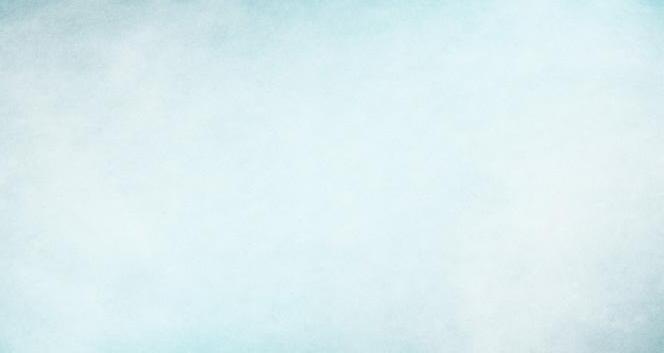




18 TORAH TIDBITS 1557 / PEKUDEI crossroadsjerusalem.org 050-468-5463 (Hotline) 02-624-6265 Yaffo 34, Jerusalem 24h If you feel that emotional support can be helpful to you or someone you know, please contact Crossroads at 02-624-6265 and a professional social worker will schedule a meeting with you. If you are experiencing a crisis, you can reach out to a Social Worker through our Crisis Hotline (050)-HOTLINE. FREE PROFESSIONAL THERAPY & 24/7 CRISIS HOTLINE FOR ENGLISH SPEAKING TEENS & YOUNG ADULTS IN ISRAEL before after Contact us now for a consultation! Revitalize Your Home: Sofa | Mattress | Carpet with CLEANEXT Cleaning Experts! Transform your living space with our professional cleaning services. Say goodbye to stains and odors, and hello to freshness and comfort. Experience our exceptional service with a highly recommended, no-obligation demonstration in your home. 052-2200222 הידמ קויד
return

1898

JERUSALEM SALES
NEW PROJECTS - Excellent Opportunities
Desirable Neighborhoods - Call For Information
SHAAREI CHESSED / RECHAVIA
*Duplex! 5 bdrms, 25 sqm kitchen, succah, shabbat elevator, 2 parking, storage.
*New 228 sqm duplex penthouse, 30 sqm succah, shabbat elevator, parking, view
TALBIEH
250 sqm + 200 sqm garden, private land
NACHLAOT
2 rms, priv entr, storage room, NIS 2,190,000
OLD KATAMON
*Renovated 3 bdrm, ensuite MB, succah, low floor
*160 sqm 4 bdrms, garden, storage, parking
HAR NOF -New listing!
Centrally Located– 10 room duplex with 400 sqm garden (room for a pool), excellent condition
MEKOR CHAIM - NEW PROJECT
126 sqm, spacious 4 bdrms, succah, 3 exposures, 2 parking, storage. Close to Baka & G. Colony
SALE/RENTAL - RAMOT B
Cottage, 200 sqm, 5 bedroom, 3.5 bathrooms, semi furnished, garden, view. Option for a unit
FOR MANY MORE PROPERTIES: 02-651-4030

2024



19
PESACH IS COMING! LET US STRENGTHEN YOUR LOOSE & SHAKY FURNITURE DON’T WAIT UNTIL IT’S TOO LATE !
Eiferman Properties www.eifermanrealty.comLtd.

COVENANT & CONVERSATION
THOUGHTS ON THE WEEKLY PARSHA
RABBI LORD JONATHAN SACKS ZT"L
FORMER
May
תומשנ
On Jewish Character
Pekudei has sometimes been called “The Accountant’s Parsha”, because that is how it begins, with the audited accounts of the money and materials donated to the Sanctuary. It is the Torah’s way of teaching us the need for financial transparency.
But beneath the sometimes-dry surface lie two extraordinary stories, one told in last week’s parsha, the other the week before, teaching us something deep about Jewish nature that is still true today.
The first has to do with the Sanctuary itself. God told Moses to ask people to make contributions. Some brought gold, some

silver, some copper. Some gave wool or linen or animal skins. Others contributed acacia wood, oil, spices, or incense. Some gave precious stones for the High Priest’s breastplate. What was remarkable was the willingness with which they gave:
The people continued bringing [Moses] additional gifts every morning. So all the skilled workers who were doing all the work on the Sanctuary left what they were doing, and said to Moses, “The people are bringing more than enough for the work God has commanded us to do.”
Moses ordered an announcement to be made throughout the camp:
“Let no man or woman make anything more as an offering for the Sanctuary.”
And so the people brought no more, because what they already had was more than enough to for all the work that was to be done. (Ex. 36:3-7)
They brought too much. Moses had to tell them to stop. That is not the Israelites as we have become accustomed to seeing them, argumentative, quarrelsome, ungrateful. This is a people that longs to give.
One parsha earlier we read a very different story. The people were anxious. Moses had been up the mountain for a long time. Was he still alive? Had some accident happened to
20 TORAH TIDBITS 1557 / PEKUDEI
the learning of these Divrei Torah be תמשנ יוליעל HaRav Ya'akov Zvi ben David Arieh zt"l
יוליעל
ה״ע רטרש קחצי תב הינעמו בייל הירא ןב לאירזעו ה״ע זייא דוד לארשי תב הדלוגו רשא בקעי ןב סחנפ
CHIEF RABBI OF THE UNITED HEBREW CONGREGATIONS OF THE COMMONWEALTH
him? If so, how would they receive the Divine word telling them what to do and where to go? Hence their demand for a Calf – essentially an oracle, an object through which Divine instruction could be heard.
Aaron, according to the most favoured explanation, realised that he could not stop the people directly by refusing their request, so he adopted a stalling manoeuvre. He did something with the intention of slowing them down, trusting that if the work could be delayed, Moses would reappear. This is what Aaron said:
“Take off the gold rings from the ears of your wives, your sons, and your daughters, and bring them to me.” (Ex. 32:2)
According to the Midrash, he thought this would create arguments within families, there would be resistance to the requests for jewellery, and the project would be delayed. Instead, immediately thereafter without a pause, we read:
So all the people took the gold rings from their ears and brought them to Aaron. (Ex. 32:3)
Again the same generosity. Now, these two projects could not be less alike. One, the Tabernacle, was holy. The other, the Calf, was close to being an idol. Building the Tabernacle was a supreme mitzvah; making the Calf was a terrible sin. Yet their response was the same in both cases. Hence this comment of the Sages:
One cannot understand the nature of this people. If they are appealed to for a Calf, they give. If appealed to for the Tabernacle, they give. (Yerushalmi Shekalim 1, 45)
The common factor was generosity. Jews may not always make the right choices in what they give to, but they give.
In the twelfth century, Moses Maimonides


Jerusalem Real Estate is My Business Eta: 054-723-3863
Amazing stand alone homes in OLD KATAMON,
TALBIYA, BAKA, GERMAN COLONY
In OLD KATAMON 220 sqm plus 80 sqm of outdoor space. For renovation, pkg & storage. Includes separate unit. 9,000,000 NIS
In GERMAN COLONY. 300 sqm plus 170 sqm registered garden. Plus parking and roof top terrace. Price: 18,000,000
OLD KATAMON Spacious 253 sqm apartment FOR RENT. 7 bedrooms, 4.5 bathrooms, large outdoor space , private entrance, parking. 32K/mo
In BAKA, 236 sqm on two floors, plus 80 sqm of outdoor space, high ceilings, authentic Jerusalem bldg with modern addition. 4 bedrooms, office/ or sitting room. Master suite on entrance level. Parking & storage. Price: 15,950,0000
BAKA Two story penthouse 200 sqm. Light open space kitchen & living room, sukkah terrace. Elevator, balconies, 2 parking, elevator, storage room. 12,500,000 NIS
OLD KATAMON, Moshava Bldg. 74 sqm, two beds, 2 baths & 2 terraces. 3rd floor great views. Available immediately. 2 elevators, underground parking. 24/7 doorman. 3,500,000 NIS






Eta Morris Realty, Ltd.
etamorrisrealestate@gmail.com
Eta: 054-723-3863 etamorrisrealty.co.il
OU ISRAEL CENTER 21
twice interrupts his customary calm legal prose in his law code, the Mishneh Torah, to make the same point. Speaking about tzedakah, charity, he says:
“We have never seen or heard about a Jewish community which does not have a charity fund.” (Laws of Gifts to the poor, 9:3)
The idea that a Jewish community could exist without a network of charitable provisions was almost inconceivable. Later in the same book, Maimonides says:
We are obligated to be more scrupulous in fulfilling the commandment of tzedakah than any other positive commandment because tzedakah is the sign of the righteous person, a descendant of Abraham our father, as it is said, “For I know him, that he will command his children . . . to do tzedakah”...If someone is cruel and does not show mercy, there are sufficient grounds to suspect his lineage, since cruelty is found only among the other nations . . . Whoever refuses to give charity is called Belial, the same term which is applied to idol worshippers. (Laws of Gifts to the poor, 10:1-3)
Maimonides is here saying more than that Jews give charity. He is saying that a charitable disposition is written into Jewish genes, part of our inherited DNA. It is one of the signs of being a child of Abraham, so much so that if someone
does not give charity there are “grounds to suspect his lineage.” Whether this is nature or nurture or both, to be Jewish is to give.
There is a fascinating feature of the geography of the land of Israel. It contains two seas: the Sea of Galilee and the Dead Sea. The Sea of Galilee is full of life. The Dead Sea, as its name implies, is not. Yet they are fed by the same river, the Jordan. The difference – and this is key - is that the Sea of Galilee receives water and gives water. The Dead Sea receives but does not give. To receive but not to give is, in Jewish geography as well as Jewish psychology, simply not life.
So it was in the time of Moses. So it is today. In virtually every country in which Jews live, their charitable giving is out of all proportion to their numbers. In Judaism, to live is to give.
These weekly teachings from Rabbi Sacks zt”l are part of his ‘Covenant & Conversation’ series on the weekly Torah teaching. With thanks to the Schimmel Family for their generous sponsorship, dedicated in loving memory of Harry (Chaim) Schimmel. Visit www.RabbiSacks.org for more.




22 TORAH TIDBITS 1557 / PEKUDEI
The daughter and granddaughters of Mrs. Chana (Hammer) Homnick a"h are carrying on the Chicken Fund in their grandmothers' memory. The Clara Hammer Chicken Fund continues to provide chickens for Shabbat and other basic necessities for over 200 poor and needy families every week. You can send your donations to: The Clara Hammer Chicken Fund P.O.B. 18602 Jerusalem 91185 | Tel. 02-582-3477 Donate via PayPal at Chickenladyofjerusalem.com Or you can pay Hacker's Butcher Shop directly via credit card at Tel. 02-5819378 TRANSFER YOUR OLD FILM/VIDEO's (All formats) In Quality to Digital Preserve Family History from Fading Michael 052.286.8626 Photography with feeling Facebook.com/L'Dorot Photography





NEW LISTING! 180m new penthouse on one level in Baka - 5 rooms, large succah terrace, additional 40m storage, high ceilings, Shabbat elevator, parking, close to Nitsanim Synagogue. DEBORAH - 054-4804767
NEW LISTING! Unique penthouse on Smuts St., German Colony - 300m spacious penthouse, private elevator, 6 rooms, double height ceilings, terrace Sukkah, boutique building. MAYA - 054-6650184
NEW LISTING! Stunning 160m apartment with 20m Sukkah terrace, pastoral location, Old Katamon, 5 rooms, 2.5 bathrooms, elevator, parking, storage.
Small quiet lane of German Colony - New private house of 500m built, prime location, plot of 560m, 3 levels, possibility for a pool, high ceilings, full of character and light, views. DEBORAH - 054-4804767
Ben Maimon St- Rechavia - 260m duplex apartment, 5 rooms, terraces, renovated, shabbat elevator, private parking. MAYA- 054-6650184
New development in the best German Colony Last 200m penthouse, 140m garden apartments, and 3-4 room apartments, Ready in 3 years.
MAYA - 054-6650184
Unique luxurious 450m Penthouse with private pool on rooftop in Talbieh - New boutique residence, high ceilings, several large terraces, private roof, magnificent views of Jerusalem FOR SERIOUS BUYERS ONLY. DEBORAH- 054-4804767

In a luxurious building in Talbieh - 200m on one level, 2 balconies, 2 elevators, gym, lobby, 2 parking spots, storage, can be designed per request
BEST INVESTMENT - PRESALE new development close to Baka - 2,3,4 & 5 rooms, terraces, gardens, private parking, ready in 3 years, great terms of payment!
OU ISRAEL CENTER 23 ARE YOU CONCERNED ABOUT... Alzheimer's? Dementia? Memory loss? Cognitive decline? Forgetting places/names? Losing things? Functional Medicine Clinic VISIT OUR WEBSITE AT BEYOUNG.LIFE 02.622.8674 info@beyoungclinics.com Dr. Barry Dinner MBBCH, ABAARM is a highly experienced physician, certified by the American Academy of Anti-Aging Medicine, who offers a unique approach to anyone looking to prevent and treat Alzheimer’s disease, memory loss or cognitive decline. OTHER SPECIALTIES Cardiovascular • Stress Hormone • Gastrointestinal Ask us about our new super brain supplement ReMIND Most Exquisite Properties in Jerusalem! 02-6744000 0544804767 www.real-estate-jerusalem.co.il deborah@realestatejerusalem.co.il
 BY RABBI NACHMAN (NEIL) WINKLER Faculty, OU Israel Center Rabbi Winkler's popular Jewish History lectures can be viewed by visiting the OU Israel Video archive: https://www.ouisrael.org/video-library
BY RABBI NACHMAN (NEIL) WINKLER Faculty, OU Israel Center Rabbi Winkler's popular Jewish History lectures can be viewed by visiting the OU Israel Video archive: https://www.ouisrael.org/video-library
From One Generation to Another
Parashat Pekudei, the final portion of Sefer Shemot, completes the sefer quite fittingly with a detailed report of Israel’s completion of the building and furnishing of the Mishkan. Similarly, our haftarah, (according to Ashkenanic minhag) opens with the words “VaTishlam kol ham’lacha” – “All the work [construction of the Beit HaMikdash] was completed” and then includes the “furnishing” of the First Temple as well. Clearly, Chazal saw the story of Shlomo’s completion of the building and furnishing of the Mikdash as a fitting linkage to the story of Moshe’s completion of the Mishkan in our parasha, and, therefore, made this selection a natural choice for this week’s haftarah.
It is interesting to note how Shlomo HaMelech found it important to bless Hashem and the people at this most momentous occasion. He saw this event as a necessary time to review the history that led to the construction of the Mikdash and to bless G-d for having kept His promise to David HaMelech, i.e., that his son would build the Temple. Shlomo reminds the masses how his father had desired, and even intended, to build the Mikdash, until Hashem denied him that privilege
and gave that task to Shlomo himself. Lastly, the King thanked G-d for allowing him to fulfill the divine charge of building the Mikdash and arranging for a proper place for the Holy Aron. Almost one-third of the perek (M’lachim 8: 13-21) is dedicated to Shlomo’s “history sermon”. Chazal’s inclusion of this section to our haftarah, reflects their view of its importance.
And yet, surprisingly, we find nothing like that when the Mishkan was completed. In fact, throughout the entire parasha, no word at all is spoken by Moshe Rabbeinu! He offers no praise to Hashem for His directives, no gratitude to the artisans for fashioning the multitude of furnishings nor congratulations to the people for contributing all of the materials! The only reaction of Moshe to the successful completion of this monumental project we find in but three words: “Vay’varech otam Moshe”, “and Moshe blessed them (the nation). What was that blessing? What did Moshe say?
The Torah doesn’t share that with us.
And why not? Because there really was no reason to do so.
Allow me to explain. At times, we are tempted to regard two similar events in Tanach as being perfectly parallel episodes, and expect each detail to match from one story to the other. And we might assume so regarding our two stories as well. But despite the similarities between the parasha and our haftarah, we must realize that the events were separated by almost 500 years! As a
24 TORAH TIDBITS 1557 / PEKUDEI
PROBING THE PROPHETS
be in loving memory and נ"
our dear parents whose yahrtzeits are in Kislev
been memorialized in a popular song, "An eternal people does not fear the long and arduous path."
Doris Weinberger a"h
ולסכ 'ד -ה"ע המלש לאקזחי תב האל הרובד
Max Weinberger z”l
ולסכ ז"כ -ל"ז בד ןב ךלמילא
Greatly missed by their children, grandchildren and great grandchildren
Rav Aryeh and Dvora Weinberger
Bernie and Leah Weinberger
Menachem and Hannah Katten
Patience is necessary for those who follow Isaac's way. But a wise woman taught us that patience is but another name for hope. That woman was Jane Austen, who put these words into the mouth of one of the characters in her great novel, Sense and Sensibility: "Know your own happiness. You want nothing but patience—or give it a more fascinating name: call it hope."
In observance of the Shloshim of our friend Yehuda Leib Berren z"l
Rav Menachem Weinberg will give a shiur in his memory "Heroic Joy"
result, they reflect different realities of two different centuries, two different generations with two different experiences. The desert nation witnessed Hashem’s open miracles and were led by a prophet who communicated directly with G-d. Consequently, Israel required no proof of the divine charge to build the Mishkan and Moshe had no need to convince them that they had completed a holy task. In fact, the parsha’s emphasis “ka’asher tziva Hashem et Moshe”, that the nation completed each part of the undertaking exactly as Hashem told Moshe, (repeated 17 times) clearly indicates that B’nai Yisra’el’s understood that they were fulfilling G-d’s commands and would be rewarded accordingly.
Monday evening, 23 November/ 8 Kislev 7:30pm
Five hundred years later, however, the reality was different
Zoom Meeting: 853 8980 1519
Password: Yehuda
The generation of Shlomo was distanced from the miracles of the desert. Their knowledge of Hashem was based upon the teachings of the past, of the prophet Shmuel, of King Sha’ul and of their previous King, David. THIS was their “mesorah”. Shlomo HaMelech received no instructions directly from G-d…. but he did receive them directly from his father. Realizing that the nation might have doubts regarding a “supposed” divine command to build this first Beit HaMikdash, the wisest of men reviewed the past events for them, their history, their “mesorah” and, in doing so, reinforced the people’s faith in G-d, the His Mikdash….and in their chosen King.
We are a nation who stood at Sinai…perhaps not physically, but all that was taught there was passed down from generation to generation. That is our Mesorah!!
And that is how we too will merit to see the completion of the third – and ultimate – Mikdash!
SEALING SERVICES

shmuelnathan4@gmail.com

ANGLO- SAXON-JERUSALEM
ISRAEL’S LEADING REAL ESTATE NETWORK
FOR SALE IN JERUSALEM:
OLD KATAMON
ON A QUIET BEAUTIFUL STREET (HAPORTZIM)
Spacious 3 room apartment, 3 balconies, lots of light. Close to park, Palmach shops, good schools, synagogues, museums & theater, public transportation. Exclusive! Nava 053-6642512
BAKA - MORDECHAI HAYEHUDI ST.
Beautiful 5.5-room garden apartment in the heart of Baka, Arab-style house, next to Derech Beit Lechem shops & restaurants, private entrance, 152 sq meters, stunning large garden, lots of light. Exclusive! Nava 053-6642512
IN THE HEART OF SAN SIMON
Green & pleasant environment, new apartments in a small "boutique" building of TAMA 38, extremely well thought out, spacious, with terrace or garden, private parking and cellars. 3, 4 & 5 room apartments, garden level & penthouses. Opportunity to enter pre-sale, under very attractive conditions. Exclusive! Ilana 053-4872526
3 Moshe Hess St., Jerusalem
0778038511
OU ISRAEL CENTER 25
ISRAEL CENTER 15
OU
052-385-9944 • 054-499-9043
על

RABBI SHALOM ROSNER
Rav Kehilla, Nofei HaShemesh Maggid Shiur, Daf Yomi, OU.org Senior Ra"M, Kerem B'Yavneh
Beit Yisrael – Importance of Family
The final pasuk in Sefer Shemot ends with the phrase:
)חל:מ תומש( םהיעסמ־לכָב לארשי־תיב־לכָ יניעל
Before the eyes of the entire house of Israel in all their journeys (Shemot 40:38)
Shemot concludes with the term תיב לארשי (the house of Israel). This term appears less than ten times in the Torah. In contrast, the books of Vayikra and Bamidbar each respectively conclude using the phrase Bnei Yisrael לארשי ינב, a term that appears nearly 400 times in the Torah.
Rav Frand (Vort on the Parsha) citing Rav Nochum Lansky, a Rosh Yeshiva in Ner Yisrael offers an explanation for this anomaly. At the beginning of Sefer Shemot, the very first pasuk reads:
תא המירצמ םיאבה לארשי ינב תֹומש הלאו )א:א תומש( ואב ותיבו �ש יא בֹקעי
And these are the names of the sons of Israel who came to Egypt; with Jacob, each man and his household came (Shemot 1:1).
Sefer Bereshit is the genesis of the world and Sefer Shemot is the genesis of the Jewish people. It depicts the creation of the Jewish nation, comprised of families. It is the family unit that transmits the tradition and together creates a nation. Unfortunately, in the modern era we have witnessed a dissolution of the importance of family. A nation is only as strong as its families.
In Sefer Shemot there are frequent references
to family. The rituals of the korban Pesach were to be performed by each household: תיבל הש תיבל הש תובא. In preparation for Matan Torah Hashem commands Moshe to instruct the house of Yaakov בקעי תיבל רמאת הכָ
. The family and household are the strength of the Jewish people.
Rav Shimshon Raphael Hirsch notes that the halacha of exempting a groom from going to battle during his first year of marriage seems to conflict with a general rule. Typically, when there is a conflict between a mitzva incumbent on the public and one incumbent on an individual, the public obligation supersedes the personal mitzva. If so, why is a chatan exempt from going to war during his first year of marriage? Rav Hirsch suggests that when the chatan and Kallah spend time cementing their relationship they are actually fulfilling a public imperative, because each home contributes to the foundation of the Jewish nation. In fact, perhaps that is why we wish the bride a groom that they build a faithful home among the Jewish nation לארשיב ןמאנ תיב.
During these challenging times many individuals are serving in the army and others are performing various acts of chesed for those displaced, injured and taken captive. May we be able to strengthen the ties among our immediate family members and through each member contribute to the well-being of our larger family – Am Yisrael.
26 TORAH TIDBITS 1557 / PEKUDEI
 Izzy Leizerowitz CEO & LICENSED ISRAEL BROKER
Izzy Leizerowitz CEO & LICENSED ISRAEL BROKER



CONTACT US FOR A QUOTE
KETER PROPERTY MANAGEMENT SERVICES

Looking to have us manage your property on a SHORT-TERM or Airbnb type basis, where we provide a ‘drop key’ service to maintain and prepare for your tenants’ arrival? Between rentals, we check and clean the property and take care of any maintenance issues NO PROBLEM!

IL: 972.52.682.9367
info@keteradvisors com
Looking to rent out your Israel-based property on a LONG-TERM basis, including finding you a quality renter, collecting rent, and handling everything on your behalf? NO PROBLEM!

Keter offers a full concierge package for buyers who live overseas and buy an apartment in a construction project. We take care of all physical onsite and in-country requirements during & after the construction phase. NO PROBLEM!
US: 786.385.8859
www keteradvisors com


OU ISRAEL CENTER 27
REBBETZIN SHIRA SMILES
Faculty, OU Israel Center
Actual Accounting
The name of our parshah, Pekudei, offers tremendous insight and perspective for calculated, purposeful living. Pekudei chronicles an accounting; taking stock of all the materials donated for the mishkan and determining how everything was to be used with precise consideration.
We find a relevant elucidation on this idea in Darash Moshe. Rav Moshe Feinstein zt”l notes that after our passing we will need to account for how we used the many gifts we had been given. The primary gift being that of time. How do we use the time that Hashem has granted us? How much time do we use for the service of Hashem, for helping others, for making the world a better place? How much time do we waste on things of little significance? The Malbim remarks that one’s real age is determined by the amount of time he used to serve Hashem, which can be quite different from one’s chronological age. As such, one can inhabit this earth for many years yet only really have ‘lived’ a relatively short amount of time.
It is our responsibility to view each day as a meaningful opportunity to soar. The Rebbe of Gur, Sefat Emet, expounds on Hillel’s famous dictum, “Im lo achshav, aymatai - If not now, when?” (Avot 1:14) What one can accomplish
today can’t possibly be done on the morrow, since each day has its own energy and special Divine facilitation. We can live more in tune to the power of each day and connect to its energy for real growth. Indeed, the Rashba tells us that as we wash our hands each morning, we should view ourselves as a newly created being ready to achieve greatness. Not only is each day monumental, but each moment holds great potential as well. Thus, we are obligated to desecrate the Shabbos to save a life, even if it will grant the person one extra moment to live. This is the Torah’s lesson to us on the value of time.
Additionally, we can employ an accounting to the way we use our strengths and special qualities that Hashem has given us. We each have a unique recipe of abilities and talents that we are meant to develop to the fullest. We must take the time to carefully evaluate whether we utilize our gifts in the best way possible.
Rav Moshe zt”l further tells us to have a special accounting of our finances and resources. How have we spent our money? How much money did we give to tzedakah and worthy causes? How have we appropriated the assets granted to us by our Creator?
In a world where people spend so much time and money on frivolous matters, Pekudei teaches us to pause and take stock. It is a timeless message that directs us to remember that everything we have is from Hashem and He trusts us to make use of it all appropriately.
28 TORAH TIDBITS 1557 / PEKUDEI

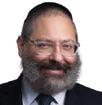
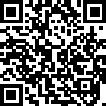

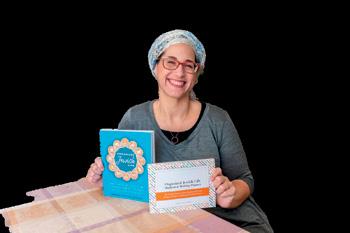


OU ISRAEL CENTER 29 be ready for every thing Pick up your copy and be prepared for every occasion and Jewish life cycle event. Checklists to help you prepare for every event @BALAGANBEGONE organizedjewishlife.com Companion Shabbat & Holiday Planner online at amazon.com or in Israel exclusively at Makes a great gift Breaking the Silence: Ending Mental Health Stigma A free webinar featuring the world-renowned Rabbi YY Jacobson Sunday, March 17th 2:00 PM EDT 8:00 PM IST Register today! Scan the QR, or visit: https://swiy.co/ yyjacobson www.avneichein.org




30 TORAH TIDBITS 1557 / PEKUDEI Especially Now! Donate through our website www.ouisrael.org/purim Give Pre-Purim Mishloach Manot to heroic IDF soldiers in bases and in hospitals Price: $28 / NIS 100 רעונה יזכרמ םוקמ אתיירואד or scan the code Donations made to the OU Israel are tax deductible Join OUr Purim Campaign


OU ISRAEL CENTER 31
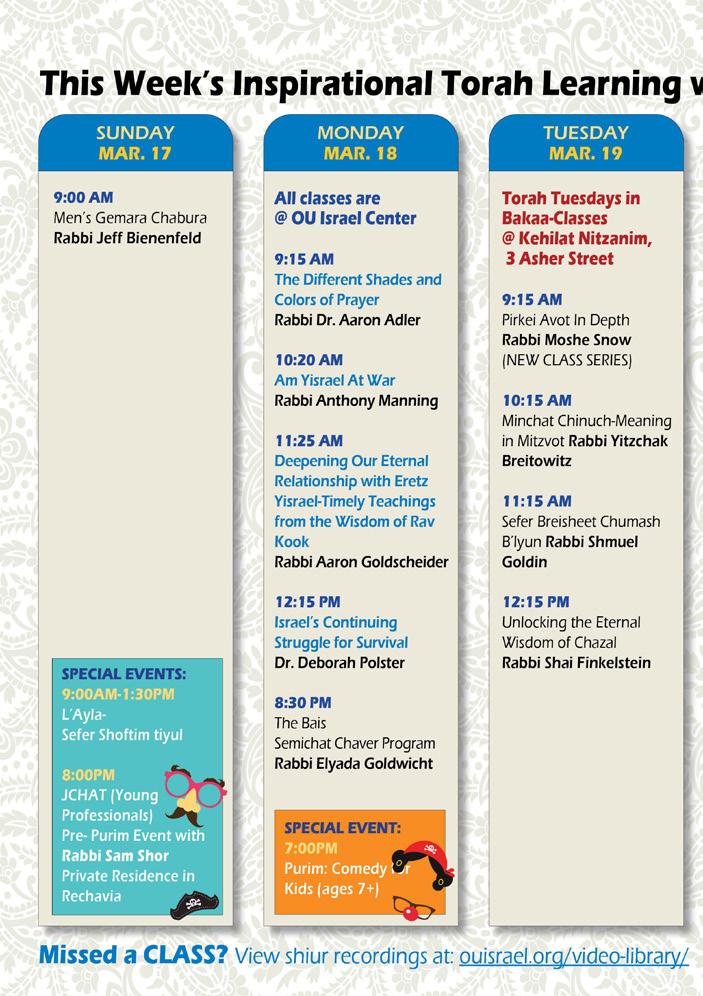
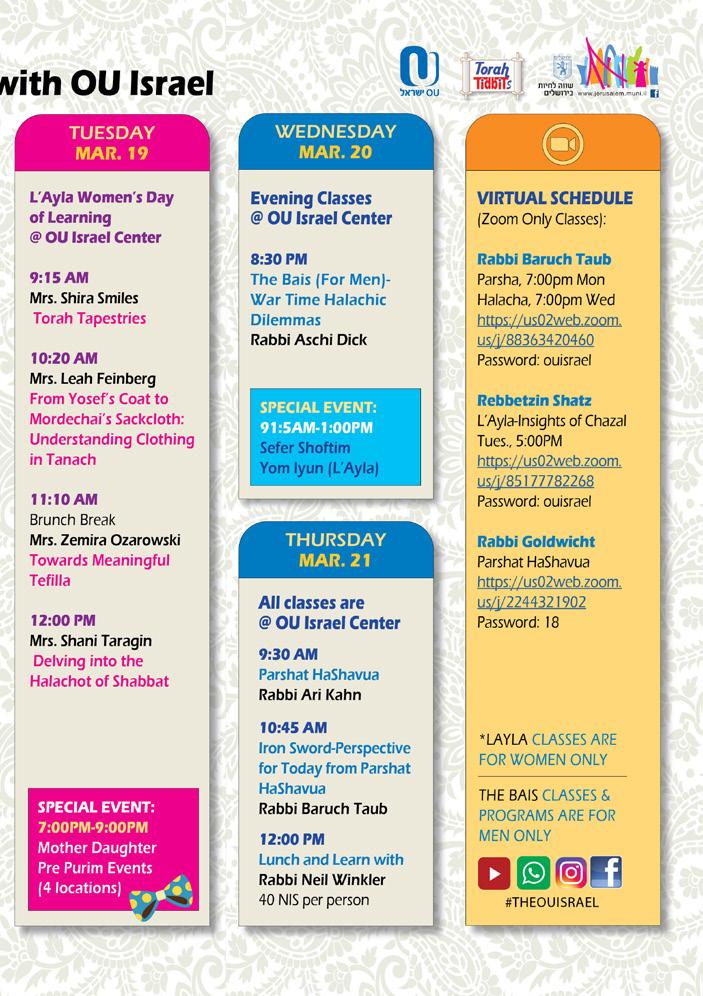



34 TORAH TIDBITS 1557 / PEKUDEI
DOROT - The OU Women's Intergenerational Choir
Director Hadassah Jacob
052-384-7230
Monday Evenings 7:00-9:00pm
Call to check

You are invited to an unusual evening in memory of Rav Yehoshua Neaman ל"ז
We are honored - our guest speaker is Rabbi Zev Leff א"טילש Rav of Moshav Matityahu
Tuesday eve March 26, 8:00pm at the OU Israel Center
Special Gifts & refreshments will be served
All welcome!
GET FIT WHILE YOU SIT:
Exercise for ladies
Resumes Oct 15th 12:30-1:15pm
Sundays 12:45-1:30pm at the OU Israel Center
Sura Faecher 0504153239

proud sponsors







OU ISRAEL CENTER 35

RABBI JUDAH MISCHEL
...Who Did Miracles for Me
Rav Chaim of Volozhin was one of the important contributors to the development of Jewish thought and Torah study at the turn of the Nineteenth Century. One of the primary talmidim and progenitors of the Vilna Gaon, Rav Chaim transmitted the sacred mesorah to generations of students. He founded the great Yeshivah of Volozhin, renowned as the Eim haYeshivos, “the Mother of all Yeshivos”, where engagement in the analytical methodology of the Gr’a awakened a revolution in Torah study. Known after his classic and groundbreaking sefer, the Nefesh haChayim, Rav Chaim cemented the intellectual and spiritual path of his Rebbe, the Vilna Gaon.
One day, as Rav Chaim was traveling with a group of students about to cross the Romanova bridge (in modern day Krasnaya Polyana, Russia), he abruptly asked the carriage driver to stop and pull over. The Nefesh haChayim looked out at the river below and and summoning great kavanah, recited the berachah, הזה םוקמב סנ יל השעש, “Blessed is…the One who performed a miracle for me at this place.” A curious Talmid could not help but ask the Rosh Yeshivah what miracle he had experienced there.
Rav Chaim took a deep breath, and began to tell the story:
“Once, in a snowstorm, in bone-chilling cold, a sheer sheet of ice covered the narrow Romanova bridge. A young mother, clutching her child bundled in a blanket, slowly made her way over the bridge. As a horse drawn carriage passed, the woman was forced to the side. The wind howled and the woman slipped and fell, her baby tumbled over the railing, down into the raging waters below. She cried out, as onlookers helplessly watched the baby plunge into the freezing waters below.
“Shrieks of horror turned to gasps of amazement when, moments later, the bundle was seen floating intact on top of the choppy waters. The baby seemed to be lifted by some Divine force. As young men shouted and raced with all their strength down to the shore, the baby was miraculously deposited on dry land. They lifted the little baby girl, still warm and cooing peacefully, and brought her back to her mother’s arms.
“This girl grew up and became a righteous woman known as Traina, who married a scholar named R’ Shlomo Zalman… and gave birth to Rav Eliyahu…our great teacher, the Gaon of Vilna.”
In the first month of the second year, on the first of the month, the Mishkan was set
36 TORAH TIDBITS 1557 / PEKUDEI
Executive Director, Camp
HASC
Author of Baderech: Along the Path of Teshuva (Mosaica 2021)
�ש דחל דחאב תינשה הנשב ןֹו�שארה �ש דחב יהיו :ןכָשמה םקוה ־תא םשיו וינדא־תא ןתיו ןכָשמה־תא השמ םקיו וידומע־תא םקיו ויחירב־תא ןתיו וישרק
up. Moshe set up the Mishkan, placing its sockets, setting up its planks, inserting its bars, and erecting its posts. (40:17-18)
Our sedra describes the final stages of the building and dedication of the Mishkan, providing an accounting for the materials donated by Klal Yisrael. These richly beautiful components are brought to Moshe Rabbeinu, who guides the process until the structure is complete and the Divine Presence rests within it.
Midrash Tanchumah (Pekudei, 11) recounts some of the exciting experiences surrounding the completion of the Mishkan, painting a picture of some of the behind-the-scenes drama. Try as they might, all of those who contributed to the building of the Mishkan could not comprehend how to complete its construction. Again and again, the Mishkan failed to stand and remain stable. Frustrated, they gathered their handiwork, representing their best of their efforts, and approached Moshe Rabbeinu for guidance.
ודימעהל עדוי יניא ,םלוע לש ונֹובר ,השמ רמא, “Moshe said, ‘Master of the Universe! I do not know how to erect it either!’ Finally, it was miraculously lifted by some Divine force — as the pasuk says: ןכָשמה םקוה, “the Mishkan was set up,” in the passive tense. In the end, all realized that the Ribbono shel Olam Himself had made the edifice stand, establishing, even until today, the ‘headquarters’ of our relationship with Hashem.
Prior to the giving of the Torah, our faith and avodas Hashem was based on the םיתפומו תותוא, the “signs, wonders and open miracles” that we experienced in Egypt. Says the Kedushas Levi, upon receiving the Torah, our spiritual perception was refined to such a heightened point
of spiritual sensitivity that םגש ערפמל ועדי אלפה ןיא םיבו םירצמב השעש תואלפנהו םיסינה לארשיל ותבהא הארנש םא יכָ סנה דצמ, “We recognized that the miracles performed in Mitzrayim were not solely intended as exhibition of Hashem’s power and ability to change nature, but as an expression of our kesher with Hashem, and His great love of Am Yisrael,” even now.
The Megillah reading is preceded by three blessings. The first is upon the mitzvah of reading the story, (al mikra megilla), the second is upon our gratitude for the miracles (she-asah nissim), and the third is upon the recognition that we have been blessed to reach the day which is eternally imprinted by that story and those miracles (she-hechiyanu). The following is the halacha, codified in Maseches Megillah (2:1):
אצי אֹ ל ,ערפמל הלגמה תא ארוקה
One who reads the Megillah out of order has not performed the mitzvah.
Why must the text be recited in its exact order? The correct interpretation of the story could still remain intact. In fact, while there are different opinions on the meaning of this, the Gemara rules (Pesachim, 6b) that the Torah itself does not always portray events in chronological order. Yet here, reading even one pasuk of the Megillah out of order undermines the flow to the extent that the mitzvah is negated.
The Meiri offers a solution. If the Megillah is read non-sequentially, we would be unable to appreciate the miraculous unfolding of events. Thus, our reading would not accomplish its very purpose: pirsumei nisa, publicization of the miracle.
The word ערפמל is most commonly translated as ‘retroactively’, suggesting here a reading
OU ISRAEL CENTER 37
students see Hashem, even though he is hidden by the mask of nature and teaches us how to use our free will to bring Hashem into the physical world in whatever way we choose.
The OU’s Jewish Learning Initiative on Campus (JLIC) is creating and nurturing vibrant religious communities in Israel to support English-speaking college students and young professionals.
of the Megillah ‘backwards’. With this in mind, the Maggid of Mezritch offers an expansive interpretation. If we relate to the the events that took place in the days of Mordechai and Esther as a historical account, as ערפמל, something which took place in the past rather than a narrative that we are experiencing ‘forward’, today in our lives, אצי אל we do not fulfill our obligation. In other words, our obligation is to notice that the miracles of Purim are happening right now. The story recorded in the Megillah is our story. Hashem’s hand is being revealed within the current flow time, within the ‘concealment’ of the natural events in our own lives.
JLIC Israel’s goals include: building a warm and welcoming Jewish community for students and young professionals; providing engaging and dynamic Jewish education; providing a supportive home environment for Olim; providing resources for personal and religious growth, including personal mentoring, Aliyah support, religious guidance and leadership development.
Current JLIC programs in Israel include: Reichman University - Herzliya; Bar Ilan University - Givat Shmuel; Tel Aviv University; Tel Aviv for Young Professionals; and Jerusalem. Contact: Rabbi Jonathan Shulman, Director of OU-JLIC in Israel shulmanj@ou.org
One is obligated to give thanks for a miracle performed for their parent or their rebbe (Shulchan Aruch, Orach Chaim, 218). The language of this blessing, סנ יל השעש הזה םוקמב, “...Who made a miracle for me in this place”, is personal, as if the salvation was experienced firsthand. For the Nefesh haChayim, crossing the Romanova bridge was an opportunity to thank Hashem for the miracle that preserved his rebbe’s mother — in effect, saving him as well.
As we approach Purim and prepare to witness our miraculous salvation ‘firsthand’, may we see the fulfillment of the bracha: םיסינ השעש הזה ןמזב םהה םימיב וניתובאל, and experience miracles and revealed good in this time!”
Tzitzit tying at the OU Israel Center with Ruti - no experience needed
Mondays at 1:30pm and Wednesdays at 12:00pm
SHIUR SPONSORS
TO SPONSOR A SHIUR CONTACT
Chana Spivack - 050-229-4951 or donate online: https://www.ouisrael.org/donate/ou-israel-center/
RABBI TAUB'S SHIUR - THURSDAY, MARCH 7TH
Sponsored by Ira Berman in memory of his father ל"ז שריה ןב םייח & his brother ל"ז םייח ןב םוחנ בר
RABBI DR. AARON ADLER’S SHIUR - MONDAY, MARCH 18TH
Sponsored by Sarah & Hanan Lemann in memory of our beloved Son-in-Law on his 2nd Yahrzeit 6 Adar Beit ןאורטיס הימחנו הקבר ןב ל"ז הונ לאגי
RABBI SHAI FINKELSTEIN'S SHIUR
Sponsored for this academic year by the Sondhelm and Wertenteil families in memory of Mel David z"l ל"ז הקבר אביוטו ריאמ םהרבא ןב לדנמ םחנמ
RABBI ADLER’S SHIUR
Sponsored for this academic year by the Frist family in memory of their beloved daughter and sister Elisheva Frist a"h - ה"ע ןמלז תב אמיס עבשילא
RABBI GOLDSCHEIDER'S SHIUR
Sponsored for this academic year תמשנ וליעל ל''ז המלש ןב בוט םשו ה''ע םהרבא תב םירמ
REBBETZIN SHIRA SMILES SHIUR
Sponsored for this academic year by Dr. & Mrs. Menachem Marcus in memory of their parents, Rose & Dr. Emanuel Marcus z"l and Rosi & Ernest Strauss z"l
ל"ז סוקרמ השמ ןב יכדרמו ריאמ ףסוי תב לזייר ל"ז סוארטש דוד ןב לאינדו םהרבא תב דומיל
RABBI BREITOWITZ'S TUESDAY SHIUR - MINCHAT CHINUCH
Sponsored for this academic year by Rabbi Refoel & Sharon Auman in memory of their parents Edith & Reiner Auman z”l
ד"יה לאפר תב ה"ע רתסאו ל"ז קודצ ןב הנוי and their son Rabbi Shmuel Eliyahu Auman z"l
י"נ לאפר ברה ןב ל"ז והילא לאומש ברה
RABBI GOLDIN'S SHIUR
Sponsored for this academic year by Dr. & Mrs. Menachem Marcus in memory of beloved aunts Irma Haas a"h and Hilde Myer a"h
RABBI MANNING'S SHIUR
Sponsored for this academic year תמשנ יוליעל ל''ז ןמלק ןב גילזו ה''ע תידנרב תב הנרב
RABBI TAUB'S WEEKLY THURSDAY PARSHAT HASHAVUA SHIUR
Sponsored by The Jewish Legacy Foundation
38 TORAH TIDBITS 1557 / PEKUDEI
OU ISRAEL CENTER 91 Torah we some
words. when every
entire
essence
Sinai physical
that
-
as Mount of
this things connec-
us the because essence.
mitzvot matters.
voice, afterlife. I canFor no foland comreal amazing teachreceived us
For Sale: Ben Maimon, 4 rooms, 113m, 2 bathrooms, porch, 1st floor, elevator, 6.2 million NIS Smadar 050-3114040 // 02-642-4329 smadi_bida@walla.co.il PRI HADASH WOMEN'S WRITING WORKSHOP AT THE OU ISRAEL CENTER Monday mornings 10.30-12.30 For more details, call Ruth 02-628-7359 or Judy 054-569-0410 Call to check Tuesday PLEASE NOTE TORAH TIDBITS ADVERTSING THROUGH PURIM Shabbat March 22-23 » Deadline Sunday, March 17 Shabbat March 29-30 » Deadline Thursday morning, March 21 at 11am (no guarantee that ads received after this time will go in)

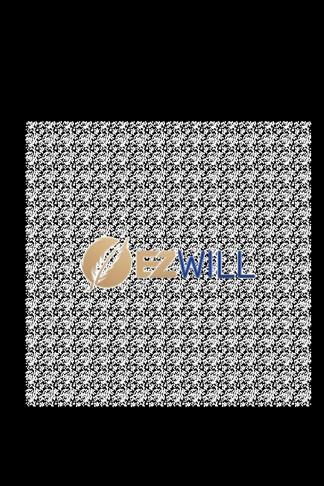


•
• Designer curtains
•
•

www.ashleywilde.co.il


OU ISRAEL CENTER 39 OU ISRAEL CENTER 81 And commitment to ‘chose with Midot, day, central per-
con-
that to far always improve the
grandchildren with bring on greater
Curtains & draperies
Venetian & Woven wood blinds
Blackout, Vertical, Roller, Roman & Pleated shades
 BY RABBI EZRA FRIEDMAN Director, The Gustave & Carol Jacobs Center for Kashrut Education
BY RABBI EZRA FRIEDMAN Director, The Gustave & Carol Jacobs Center for Kashrut Education
Introduction to Bishul Akum
Bishul Akum in a Jewish home
The prohibition
Our Sages decreed that food cooked by non-Jews, bishul akum, is prohibited to consume, even when the food is otherwise entirely kosher. According to most early authorities (see Tosafot, Avodah Zara 38a), the reason for this decree is concern about possible intermarriage resulting from the socializing with non-Jews. This article will discuss different circumstances of bishul akum and where they apply.
INTENT TO COOK
According to Biblical law, food that is completely kosher and cooked by a nonJew is permitted. However, our Sages decreed that such food, even when cooked in kosher utensils, is prohibited for consumption. This prohibition is known as bishul akum. In the coming weeks we will discuss the parameters of this rabbinic prohibition, including the reasons behind the decree, when it applies, and the practical halacha for modern industrial kashrut.
Food is a very connecting element in every society. That is the basis behind the decree of bishul akum. Our Sages were very concerned about close relationships with non-Jews since intermarriage is a very severe transgression. The prohibition effectively limits Jews and gentiles dining with each other, although there is no specific prohibition against dining with a non-Jew per se. (See Rashi on Avodah Zara 31:b.)
Forbidding the non-Jew’s cooking would be enough to create an emotional distance such that families wouldn’t marry into each other.
Rabbeinu Tam (Tosfot Avodah Zara 38:a) and Rambam (Ma’achalot Asurot 17:9)
Generally, even when the reasoning for a halacha might not seem relevant to the situation, the halacha does not change. However, there might be some exceptions based on other factors. The Gemara gives an example. In a situation where the non-Jew had absolutely no intent to cook but as a result of his actions food was cooked, there is no halachic basis to consider the food bishul akum (Masechet Avodah Zara 38:a). For example, if a non-Jew was asked to kasher an oven by turning it on the highest temperature for a period of time, a piece of raw meat that was in the oven unbeknownst to him would certainly not be bishul akum, simply because the non-Jew had no intent to cook it (see Taz YD 113:5) . This principle in no way conflicts with the reasoning of the decree, and clearly
our Sages never meant to include situations in which there was no intent. However, there are cases where the reason seems to stand yet authorities dispute whether the decree still stands.
WITHIN A JEWISH HOME
maintain that the decree is based on this issue of closeness to non-Jews that could lead to intermarriage; this is the opinion of most early authorities. However, Rashi and others attribute a different reasoning to the prohibition of bishul akum, which is that non-Jews might mix non-kosher ingredients into the kosher food. In future articles we will discuss whether the parameters of bishul akum are based on both of these reasons or just one. However, it is clear from numerous sources that the danger of intermarriage is the main reason behind the prohibition (See Torat Habayit 3:7).
The decree is binding regardless of the reason
R. Avraham Ben David, one of the early tosafists, (see Hagahot VeHe’arot on Tur YD 113 and Gilyon HaShas Yoma 18b) rules that bishul akum is not applicable within a Jewish home. When a non-Jew is cooking in a Jewish home or a Jewish-owned establishment, the food is always permitted and is not included in the decree of bishul akum. Rabbeinu Tam (ibid) and many other early authorities (see Tur and Beit Yosef YD113) reject this opinion and rule that bishul akum applies no matter where the food was cooked.
It would seem that this dispute stems from a fundamental disagreement over the mechanism of rabbinic decrees. According to R. Avraham Ben David, bishul akum is only relevant when the reason applies; however, when the non-Jew is cooking in a Jewish setting, the risk of intermarriage is remote. On the other hand, Rabbeinu Tam maintains that even in a situation where the underlying reason is largely absent, the blanket decree of our Sages still
Since the transgression of intermarriage was the primary concern behind our Sages’ decree, their goal was to powerfully discourage the possibility of developing emotional connections to non-Jews that could lead to intermarriage either in that generation or the next. Accordingly, early authorities discuss whether the prohibition of bishul akum still applies even in situations where intermarriage is not technically possible. For example, Rashba, in his responsa (1:248), examines the case of food cooked by a priest. Being that Catholic priests do not marry nor do they have children with whom to intermarry, is it permitted to eat food cooked by a priest even though the reason for bishul akum seemingly does not apply to
40 TORAH TIDBITS 1557 / PEKUDEI 52 TORAH TIDBITS 1516 / BAMIDBAR
OU KASHRUT PAGE
The OU Israel Gustave & Carol Jacobs Center for Kashrut Education


RASCO: new 4 room apartment, 95m, master suite, elevator, balcony, very nice view 2,950,000 NIS
stands. He argues that the logic of the decree may not be utilized to make exceptions since this might cause a slippery slope and undermine the decree itself (see Issur Ve’heter 43:13).
ARNONA: 4-room apartment, 90m, beautifully renovated, master suite, balcony, storage, Shabbat elevator, private parking 3,250,000 NIS
BAKA: New 4 room apartment in a new building, 88m, master suite, storage, Shabbat elevator, private parking, 3,950,000 NIS
RECHAVIA: 4-room apartment, 92m, Suka balcony, Shabbat elevator, fully accessible, private parking, storage 4,400,000 NIS
ARNONA: 5-room apartment, 120m, balcony, elevator, fully accessible, private parking, storage 4,350,000 NIS
BAKA: 5-room garden apartment, 140m, master suite, private parking, storage, full of light, airy, nice garden, 5,000,000 NIS
OLD KATAMON: Spacious new 5-room penthouse, 155m, terrace, great panoramic view, underfloor heating, Shabat elevator, 2 parking, + rental unit, 8,900,000 NIS
FOR RENT: BAKA: nice 4-room apartment, 82m, beautifully renovated, master suite, air conditioners, balcony, 2nd floor, elevator - fully accessible, storage, 8,000 NIS
Later poskim codify that R. Avraham Ben David’s opinion is rejected. This is clearly the ruling of the Shulchan Aruch and other authorities (see Shulchan Melachim 13:2). Many later authorities do not completely accept this rejection, however, and they cite R. Avraham Ben David’s position as a mitigating factor. For example, Apei Ravrevei (77:6) rules that in a case where the food was cooked accidently by a non-Jew in a Jewish home, the food would be permitted ex-post facto. Other authorities permit food cooked by a non-Jew in a Jew’s home if there were other halachic considerations. (This situation will be discussed in future articles.)
COOKING FOR HIMSELF
The OU Israel Gustave & Carol Jacobs Center for Kashrut Education was created to raise awareness and educate the public in all areas of kashrut. Rabbi Ezra Friedman, Deputy Rabbinic Administrator for OU Kosher Israel is the Center's director. him? Rashba answers that we have a rule regarding rabbinic decrees: even when the reason does not apply, the prohibition still stands. This is a necessary element in every rabbinic prohibition. Otherwise, Rashba explains, people could rationalize and find reasons why any decree should not apply in their particular situation. Accordingly, Rashba concludes that even food cooked by a Catholic priest has the prohibition of bishul akum. A similar ruling is made by Ramban (Avodah Zara 35:a) regarding non-Jewish royalty who, because of their stature, are prohibited from marrying Jews. He maintains that the fact that the non-Jews are royalty is irrelevant, and that the decree of bishul akum stands regardless of the reason behind it. Taz (YD 112:1) , Shach (YD 112:4) and Pri Megadim (YD 112:1) cite these rulings as axioms of the laws of bishul akum.
created to raise awareness and educate the public in all areas of kashrut. Rabbi Ezra Friedman, Deputy Rabbinic Administrator for OU Kosher Israel is the Center's director. him? Rashba answers that we have a rule regarding rabbinic decrees: even when the reason does not apply, the prohibition still stands. This is a necessary element in every rabbinic prohibition. Otherwise, Rashba explains, people could rationalize and find reasons why any decree should not apply in their particular situation. Accordingly, Rashba concludes that even food cooked by a Catholic priest has the prohibition of bishul akum. A similar ruling is made by Ramban (Avodah Zara 35:a) regarding non-Jewish royalty who, because of their stature, are prohibited from marrying Jews. He maintains that the fact that the non-Jews are royalty is irrelevant, and that the decree of bishul akum stands regardless of the reason behind it. Taz (YD 112:1) , Shach (YD 112:4) and Pri Megadim (YD 112:1) cite these rulings as axioms of the laws of bishul akum.
Other examples
Other examples
Shach (YD 113:20) explains that R. Avraham Ben David’s ruling applies only when a non-Jew is cooking for a Jew; however, when a non-Jew is cooking for himself in a Jew’s home, there is no room for leniency (See also Avnei Nezer, YD 97). It seems that R. Avraham Ben David was discussing a case where the non-Jew was working for or doing a service for a Jew, which might neutralize the issue of closeness and unnecessary mingling, an assumption that can’t be made when the non-Jew is cooking for himself
Later authorities discuss similar cases where the logic behind bishul akum may not apply. Responsa Shevet Kehati (6:273) rules that even food cooked by a non-Jewish child is considered bishul akum, despite the fact that the chances of marriage seem remote. The same is true for food cooked in a faraway country where Jews cannot travel -- bishul akum still applies.
Later authorities discuss similar cases where the logic behind bishul akum may not apply. Responsa Shevet Kehati (6:273) rules that even food cooked by a non-Jewish child is considered bishul akum, despite the fact that the chances of marriage seem remote. The same is true for food cooked in a faraway country where Jews cannot travel -- bishul akum still applies.
In summary:
In summary:
Our Sages prohibited food cooked by
Our Sages prohibited food cooked by


gentiles, even if the ingredients and utensils are kosher.
gentiles, even if the ingredients and utensils are kosher.
The reason cited by most authorities is the risk of intermarriage.
The reason cited by most authorities is the risk of intermarriage.
(Meishiv Nefesh 2, pp. 571-2). Authorities do not discuss the case of a non-Jewish acquaintance or friend. If someone were to invite a non-Jewish colleague or friend over and he or she offered to make some food, would that be considered bishul akum even though it’s in a Jewish home? According to the logic mentioned above, it would not be included in the lenient ruling of R. Avraham Ben David.
IN SUMMARY:
Even in cases with virtually no risk of intermarriage, the food is still prohibited, including non-Jewish royalty, priests, young children, and non-Jews from distant lands.
Even in cases with virtually no risk of intermarriage, the food is still prohibited, including non-Jewish royalty, priests, young children, and non-Jews from distant lands.
• If a non-Jew accidently cooked food with no intent, such food is not included in the decree of bishul akum.
• Early authorities debate whether food cooked by a non-Jew in a Jew’s home is considered bishul akum. The consensus is to be strict except for certain circumstances.


077-2050015 052-2678749


• According to all authorities, if a non-Jew cooks for himself in a Jewish home, the food is prohibited because of bishul akum.


OU ISRAEL CENTER 41 OU ISRAEL CENTER 53
Kashrut Questions in Israel? Call or Whatsapp Rabbi Friedman at 050-200-4432 Meir Golan 077-2050015 052-2678749 golanechasim@gmail.com Meir Golan Old Katamon: 4-room apartment in a small and quiet street sqm, renovated, very bright and airy, master bedroom, Safe (mamad), sukkah balcony, view, elevator, 3,400,000 NIS Old Katamon sukkah balcony facing a elevator, parking, 3,290,000 NIS Old Katamon sqm, elevator, RASCO: new 4 room apartment, 95m, master suite, elevator, balcony, very nice view 2,950,000 NIS 5,000,000 NIS OU ISRAEL CENTER 53
was
Kashrut Questions in Israel? Call or Whatsapp Rabbi Friedman at 050-200-4432 Meir Golan
golanechasim@gmail.com Meir Golan Old Katamon: 4-room apartment in a small and quiet street 101 sqm, renovated, very bright and airy, master bedroom, Safe room (mamad), sukkah balcony, view, elevator, 3,400,000 NIS Old Katamon sukkah balcony facing a elevator, parking, 3,290,000 NIS Old Katamon sqm, elevator, RASCO: new 4 room apartment, 95m, master suite, private parking, storage, full of light, airy, nice garden, OU ISRAEL CENTER 53 the similar Zara who, prohibited that royalty is bishul reason
cite laws of cases may (6:273) non-Jewdespite seem cooked cannot by Kashrut Questions in Israel? Call or Whatsapp Rabbi Friedman at 050-200-4432 Meir Golan 077-2050015 052-2678749 golanechasim@gmail.com Meir Golan Old Katamon: 4-room apartment in a small and quiet street 101 sqm, renovated, very bright and airy, master bedroom, Safe room (mamad), sukkah balcony, view, elevator, 3,400,000 NIS Old Katamon: 4-room apartment, 90 sqm, well split, bright, airy, sukkah balcony facing a magnificent panoramic view, 3 exp Shabbat elevator, parking, 3,290,000 NIS
Katamon: Spacious 3-room apartment n a very quiet street 75 sqm, sukkah balcony facing a green and pastoral view, 3 exp. Shabbat elevator, private parking storeroom, 2,690,000 NIS
(YD
Old
המלש האופר הטרב תב המחנ תור

SIMCHAT SHMUEL
BY RABBI SAM SHOR Program Director, OU Israel Center
Parshat Pekudei, depicts once again, in vivid detail, the various begadim that the Kohen Gadol was to wear as he served in the Mishkan on behalf of all of Klal Yisrael, as well as the completion of the Mishkan’s construction and arrangement and placement of the various keilim to be used in the Mishkan.
The haftarah we’ll read this Shabbat comes from Sefer Melachim Alef, and it describes the incredible celebration upon the completion of the Beit HaMikdash in Yerushalayim, and the transport of the aron and other keilim from their temporary resting place Tzion, Ir David, to be placed in the newly completed Beit HaMikdash.
A number of years ago, a tour guide friend of mine, with whom I’ve had the personal pleasure to visit the incredible archaeological excavations of Ir David, shared a photo of a remarkable discovery. Archaeologists working in the Ir David National Park, had discovered a fantastic treasure. An archaeological expedition is currently on-going to excavate a 2,000 year old street that led Olei Regel from a massive Mikva straight up to the Beit Hamikdash. One of the members of this team of archaeologists, looked down to see what appeared to be a golden bead with a golden loop attached to it, but as they unearthed this small bead, and picked it up, they realized the object they were holding was actually a small golden bell that still sounded it’s noise!
One of the bells attached to the edge of the Me’il- the robe worn by the Kohen Gadol must have fallen off and without him
realizing, it fell into the drainage canal and left us with a rare 2,000 year old souvenir.
When I read my friend’s incredible account of this fantastic discovery, I began to ponder the significance of this find. On one hand this certainly has tremendous historical and spiritual importance, both allowing us the opportunity to walk in the footsteps of the Kohen Gadol, and to literally hold history in our hands. But what does it mean to hold history in our hands?
Truthfully, even now, Am Yisrael is holding history in our hands. At this particularly difficult period of our incredibly rich history, the achdut, collective feeling of shared responsibility and destiny, is perhaps more palpable than ever before.
Rav Moshe Weinberger shlita, shares a beautiful teaching from the Bobover Rebbe zy’a, regarding the familiar words chazak chazak, vnitchazeik, which is recited once again this Shabbat as we conclude Sefer Shemot. The Rebbe explained, that when we give of ourselves to one another, when we offer encouragement or assistance to those in need, when we do something kind for a neighbor, ultimately not only does that deed strengthen the recipient, but ultimately the giver is strengthened as well through that act of kindness,encouragement or support
Yehi Ratzon, may we continue to be cognizant of the history we hold in our hands, and may that spirit of unity and giving to one another which we feel so vividly right now, serve as the catalyst to our soon being able to experience the better tomorrow that is also surely within our reach.
42 TORAH TIDBITS 1557 / PEKUDEI


OU ISRAEL CENTER 43
 BY RABBI MOSHE TARAGIN R am, Yeshivat Har Etzion
BY RABBI MOSHE TARAGIN R am, Yeshivat Har Etzion
The Shushan Horror Show
It came without any prior warning. Suddenly, Haman was promoted, and he quickly convinced Achashverosh to launch an all-out genocide against our people. Our people committed no major crime which would warrant heavenly punishment. Suddenly, out of nowhere, Jewish destiny was thrown into question.
The pace of Megillat Esther is frenetic. Within 24 hours of the homicidal scheming between Achashverosh and Haman, letters announcing the massacre of Jews had already circulated in Shushan, while riders were swiftly in flight to the rest of the global Persian kingdom. The frantic pace reflects how unprepared everyone was for this rude awakening. We hadn’t committed any grave sin, things in Shushan seemed to be humming along, yet suddenly, we faced total extinction. We knew how it happened, we just didn’t know why it happened.
Rebbe Shimon Bar Yochai (Megillah 12a) was asked this very question by his students. Rebbe Shimon deferred to his students who, in turn, pointed to Jewish participation in the parties of Achashverosh as the root of the sin. Evidently, these two parties weren’t just festive celebrations but were morally, historically, and culturally decayed, and participation in them was criminal. Hashem sent Haman as a rude
wake-up call, which our people barely answered in time.
MORAL DEGENERACY
The two parties in Shushan were both lengthy and luxurious. The rooms were decked out with silver posts, alabaster chutes, gold sofas, resplendent tapestries, marble floors and upholstered walls. Having finalized the consolidation of the empires of Persia and Media, and having gradually extended the empire across 127 provinces, Achashverosh invited his nobleman to a 180-day celebration followed by an 8-day gala for the locals of Shushan. Everything about these parties was lavish, “over the top”, and designed to display wealth, power, and glory: רשע תא ותוארהב ותלודג תראפת רקי תאו ותוכָלמ דובכָ.
Not only were the parties opulent, but they were also voyeuristic. 180 days of wine gorging and food gluttony in public display, in the palace courtyards and in the royal gardens. Absolutely no shame and certainly no privacy or human dignity. The wine flowed abundantly, and the food supply never diminished. No holds were barred for a party meant to display opulence and authority.
Of course, any party of unbridled voyeurism quickly disintegrates into the objectification of women and into vulgar
44 TORAH TIDBITS 1557 / PEKUDEI
GEULAS YISRAEL
YISRAEL
pornography. Vashti was “kindly requested” to come and prance before the drunkards, so they could gawk and hoot at her. Chazal suggest a more nauseating plan for Vashti, meant not just to present her beauty but to completely dehumanize and humiliate her. It is no wonder that she declined this despicable request, even at the cost of her own life. Life without dignity is not worth living, and her husband and his band of merry brutes threatened to take that from her.
This carnival of ostentation and exhibitionism is the last place you would expect to find a Jew. Without question, the food, at least according to Chazal, was strictly kosher. The pasuk describes that the food choices at the party were completely voluntary since the menu wasn’t enforced: סנוא ןיא תדכָ הייתשהו . Chazal infer from this pasuk that the food was kosher or was prepared הרות לש תדכָ.
Additionally, Chazal remark that the Jewish partiers were vigilant about not drinking wine which had been touched by a non–Jew or “setam yeinam”. The food was mehadrin.
The sin of partying with the drunks of Shushan had nothing to do with the kashrut of the food but rather, with the spirit of the party. This celebration of debauchery is toxic to moral spirit and to personal sanctity. Those who entered the royal party emerged, 80 days later, without moral conscience and without their souls. Our people were punished for plunging themselves into a party which encouraged carnal pleasure and exhibitionism.
We cannot simply apply the “kosher food” test to decide which events we participate in. We must also apply the “kedusha gauge” to







check whether an environment fosters sanctity, dignity, and respect for other people. No one should have been caught dead at those Shushan parties, kosher food or not.
STRUGGLE IN YERUSHALAYIM, REVELRY IN SHUSHAN
Beyond the immorality of the party, the festivities should have been historically offensive to Jews. According to Chazal’s timeline, a few years before the party, Koresh, Achashverosh’s predecessor, who had first consolidated Persian and Media, authorized a Jewish return to Yerushalayim. Though this plan initially generated enthusiasm the project was ultimately grounded in the face of stiff local opposition to Jewish settlement in Israel. The opposition ultimately turned violent and the small groups of Jews who had emigrated to Yerushalayim were forced to guard their tiny
OU ISRAEL CENTER 45 NEW OFFER PRE-SALE IN OLD KATAMON Whatsapp +972 (0) 52-2636656 usa# 5164675892 , uk# 2037697899 AN EXCEPTIONAL AND RARE OFFERING TO PURCHASE LAND TO BUILD A SINGLE OR SHARED FAMILY HOME IN A BRAND-NEW BUILDING 1-5 BEDROOMS APARTMENT, ONLY 13 UNITS AVALIABLE - 2.45M NIS CREATE YOUR DREAM HOUSE IN THE GERMAN COLONY For more offers more Call now: 077-9973185 ONLY 5 NEW APARTMENTS AVALIABLE - 16 MONTH TO COMPL ITION NEW OFFER IN ARNONA - IN THE OLD SOUHGT AFTER PART Gershon Agron 24, Mamilla - Jerusalem PRIVATE INQUIRIES ONLY BUILD YOUR HOME IN BAKA , LARGE PLOT FOR 3 FAMILIES ,Private inquiries only!! NEW OFFER
settlement against aggression. The situation in Yerushalayim was bleak and frustrating and the Beit Hamikdash still stood empty, with only its basic foundations laid.
While a small group of Jews were battling for Jewish history in Yerushalayim, the cosmopolitan Shushanite Jews were living it up. If the parties weren’t odious enough, the ballroom atmosphere felt eerily familiar. The banquet halls and royal dining areas were decorated in the style of the Mikdash, even being adorned with similar materials to the Mikdash such as gold, silver, techelet and argaman. According to Chazal, Achashverosh guzzled his wine from the chalices of the Mikdash and cavorted in the elegant clothing of the Kohen Gadol. Didn’t it dawn on any of the Jews that this ugly mockery ridiculed the destroyed and desolate Mikdash? How could any Jew yearning for a return to Yerushalayim have tolerated such burlesque. Shouldn’t they have stormed out of the party in protest, registering their distaste for this boorish charade and displaying their support for their countrymen back in Yerushalayim. The party wasn’t just a moral disaster but was also historical treachery. Burials of heroes in Yerushalayim, endless parties in Shushan. How could they?
ACHASHVEROSH’S CAMPAIGN
There was, actually, a third criminal element to this party, and it surrounded the larger political role of the festival. Achashverosh’s kingdom stretched from ודוה or India, until שוכָ , which most associate with central Africa or with Ethiopia. The epicenter of the Persian empire was located to northwest of Israel in modern day Iraq and Iran. Effectively, the Persian empire dominated the entire Middle East and
stretched as far south as Africa to the west, and to India in the east.
Despite this global hegemony there was one region and one people which still defied Persian rule. The Greek islands and Greek polis states had resisted several Persian invasions, finally defeating the troops of Darius the Great in 490, effectively ending the first Persian invasion. When Achashverosh- typically assumed to be Xerxesascended the throne around the year 486 BCE, the Greek Islands stood as the only barrier against complete Persian world domination. Indeed, Achashverosh or Xerxes ruled from ודוה or India until שוכָ or Africa, but not the Greek islands to the north. Achashverosh’s struggles with Greece continue even after the Purim story, as the final peek in Megillat Esther describes him levying heavy taxes upon “the islands” hoping to extend his authority. Presumably these islands were the Greek islands.
Seeking to retaliate against Greece after their triumph over Darius in 490 BCE, Achashverosh or Xerxes prepared for war for three years amassing the largest army the ancient world had ever seen, as reported by the Greek historian Herodotus. Three years into his reign is exactly where Megillat Esther “picks up” when describing the lavish parties.
Obviously, these parties, in the third year of Achashverosh’s reign, were somehow related to the war campaign. Either they were held in preparation for the presumed victory or perhaps (depending upon the murky timelines) were held to honor the returning victorious Persian troops. The military nature of these parties is evidenced by the attendance of military
46 TORAH TIDBITS 1557 / PEKUDEI
officers and attaches or ידמ סרפ ליח .
By attending these politically motivated parties, the Jews of Shushan were throwing their full support behind a Persian demigod who sought world domination. Evidently, the Jews felt too comfortable with their presumed political influence with Achashverosh. After all, hadn’t the navi Daniel been honored by every Babylonian king from Nevuchadnezzar to Belshatzar? Hadn’t he also been revered by Darius the first Meidan king. Daniel’s successor Zerubavel had convinced Koresh to authorize the rebuilding of the Mikdash. Shushan itself was largely a Jewish city (see Ibn Ezra, Esther 1:1) and ultimately, once Esther was queened, it was obvious that the Jews of Shushan could completely rely on this tyrant for support.
By joining the party, the Jews deluded themselves into believing that they had enough political clout to live comfortably in Shushan. Maybe they should have been a little more circumspect before so eagerly supporting Achashverosh’s plans for world domination. Maybe they should have realized how fickle the political winds are and how quickly the political situation can turn.
Have we learned that lesson as well?
LIFE SETTLEMENTS
Do you have a life insurance policy you:
• No longer want?
• No longer need?
• Can no longer afford the premium?
• Could you use extra money instead of keeping your policy?
I can guarantee that if you qualify with the underwriting process I can get you more money than if you cash it in with the company.
Please contact Moshe Russell at: Buymypolicy32@gmail.com

Most Recent Listings in Jerusalem



High-end Specs
Occupancy: 10/24
SPECIAL

Last 4 bedroom in the project: 135 sqm + two 6 sqm balconies
Parking, Storage
Shabbat elevator
High-end specs
Available: 10/24 5,500,000 NIS


Spectacular Penthouse on Mekor Haim
Terrace
Terrace
High
Shabbat
Occupancy:
Price:
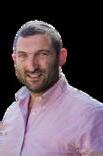
OU ISRAEL CENTER 47
3 bedrooms, 2.5 baths 105 sqm + 25 sqm garden Floor heating & Central A/C Gym, Swimming pool, Sauna Private parking, Storage 4,800,000 NIS 132 sqm + 2 terraces
1: 32 sqm from living room
15 sqm from en suite
2:
end specs
elevator, Storage
parking (2 spots)
Private
10/24
6,900,000 Duplex Garden Apartment In Quadra
Yitzchak Kowalsky 2 B e d r o o m I n N e w P r o j e c t o n M e k o r C h a i m 5 4 75 sqm, Spacious 2 Bedrooms, Sukkah Balcony
Private
Storage
Shabbat Elevator,
Parking,
2,590,000
Yitzchak@yykrealestate.com www.yykrealestate.com N e w P r o j e c t o n e k o r C h a i m S t r e e t
PRICE FOR THE NEXT 2 WEEKS:
NIS 054-766-0338

 BY REBBETZIN DR. ADINA SHMIDMAN
BY REBBETZIN DR. ADINA SHMIDMAN
Moving in, Moving Up
MELACHIM 1 7:51-8:21
How do you know you’ve finally settled into your new house? Is it when the moving truck pulls away? The last box unpacked (which may never happen)? Or is it a particular piece of furniture once in place that makes you finally feel at home?
The Haftorah begins with a pronouncement of the completion of the building of the Beit HaMikdash and the detailed description of move-in day - from the inventory list to the play-by-play of how the day unfolded. Items unloaded from the trucks, precious national treasures unpacked but it was only when the Aron was brought to its final resting spot that the Jewish people’s home for Hashem was complete.
What is it about the Aron that it is the focal point of the people? The Ramban
Luchot and the Sefer Torah which Moshe wrote. The broken luchot represent our embrace of history, imperfect as it may be. The whole luchot symbolize our present. The Sefer Torah represents our commitment to the future.
When Shlomo HaMelech built the Beit Hamikdash he made the aron the focal point because he wanted the Jewish people to recognize that our success as a nation depends on our ability to connect to our past, present and future. So too, when we build our Jewish homes, the foundations must also be the past, present and future.
Wills • Probate • Pre & Post-Nuptial Agreements Guardianship • Durable Power of Attorney (Financial/Health/Personal Decisions) HALACHIC ESTATE PLANNING



48 TORAH TIDBITS 1557 / PEKUDEI HAFTORAH
INSIGHTS
Specializing in Arthritis and Osteoporosis ZOOM CONSULTATIONS AVAILABLE

Theatre Zion presents:

“A little gem all around.” - Baltimore Sun
“Funny and wise...” - Chicago Magazine
“Very moving, beautifully written.” Chicago Tribune
Tickets: theatrezion.co.il 02-630-3600
 Yehoshua Looks, Esther Eisenberg,
Yehoshua Looks, Esther Eisenberg,

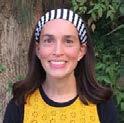
ETOWARDS MEANINGFUL
TOWARDS MEANINGFUL TEFILLA
SHABBOS
Shabbat Zemirot
BY REBBETZIN ZEMIRA OZAROWSKI Director of OU Israel L'Ayla Women's Initiative
BY REBBETZIN ZEMIRA OZAROWSKI Director of OU Israel L’Ayla Women’s Initiative
ven though we already concluded our study of Birchat HaMazon in the last article, I recently came across a remarkable story about bentching that I thought would be important to share with you. The story illustrates a beautiful point brought down by the Sefer HaChinuch. The Sefer HaChinuch writes –”וימי לכ דובכב ול ןייוצמ ויתונוזמ ,ןוזמה תכרבב ריהזה לכ“
Last Shabbat, I had one of those super-proud nachat moments. As my family sat around the Shabbat table, I noted with delight that 6 out of my 9 children were singing together, and not just singing – harmonizing, symphonizing, and really focusing on the words they were saying. It was a beautiful moment (I won’t mention what the other three were doing at the time) in which suddenly I was able to see the fruits of my labor. Having spent hundreds of Shabbatot waiting for the kids to stop being wild and whiny and to just sit at the table and sing, suddenly all the hard work paid off. There was such a sweet purity to the moment that I just wanted to capture it and pocket it for the future.
Anyone who is careful with their Bentching, his livelihood will be provide for him with respect all of his days
We spent a lot of time in our Birchat Hamazon series discussing the meaning and significance of all of the Brachot of the Bentching. But beyond understanding the deeper meanings, we also need to make sure to be ריהז with our bentching, to be careful how we recite the Bentching, the respect we give to it, and the way we concentrate and focus. If we do our bentching right, we are told that Hashem will reward us with a good livelihood.
The Jewish people have had the tradition of singing Zemirot for many centuries. In fact, Gemara Megilla 12b finds an allusion to the minhag of singing Zemirot in the story of Megillat Esther! We are told in Megillat Esther (1:10) that Achashverosh commanded Vashi to appear at the party “on the seventh day, when the heart of the king was merry with wine”. The Gemara asks – Does this mean that until now Achashverosh’s heart was not merry with wine? Did it take seven days for him to become drunk? Rava answers - The seventh day was Shabbat, when the difference between the Jewish
This story is told by Rabbi Yoel Gold and has a profound message for us in our own bentching.
Two years ago, after the tragedy in Meron, a man named Chaim Ginz decided to try and be menachem avel as many of the victims’ families as possible. The first family he visited was the Zacbach family in Bnei Brak, who were mourning their 24 year old son, Menachem Asher. At the shiva house, the family gave out bentchers with the inscription – “The last will/

people and the gentiles is most apparent. On Shabbat, when the Jewish people eat and drink, they occupy themselves with words of Torah and תוחבשת ירבד, words and songs of praise for Hashem. But the nations of the world, when they eat and drink, they occupy themselves with words of תולפת, of crassness, and this difference is what the Megilla wishes to highlight.
The minhag of singing Zemirot on Shabbat is brought down in the Mishna Berura 289:5. But the truth is that this tradition goes all the way back to Adam harishon who according to the midrash (Bereishit Rabbah 22:13), composed the song of Mizmor shir l’yom haShabbat. In that psalm, we say that on Shabbat, it is רמזלו ’הל תודוהל בוט“ ”ןוילע ךמשל. Radak explains here that Shabbat is the best day to sing praise to Hashem because we are חנ ותמשנו םלועה יקסעמ יונפ ףוגה תדרטמ, taking a break from the challenges of the week and our Neshamot are resting from all physical stresses.
request (האווצ) of Menachem Asher is to bentch out of a bentcher”. The family explained that at the age of 16, Menachem Asher had taken on the practice of always bentching from a bentcher and never reciting the bentching by heart. He took this commitment very seriously and would never wash and eat bread unless he was absolutely sure there was a bentcher available in the vicinity. Chaim Ginz heard this and decided to take on this practice as well, l’iluy nishmat this young man.
About a month later, Chaim was feeling pretty stuck. He was having trouble making a living. He was a Sofer and he had just completed a project and was unable to find any more work. Day after day, he would show prospective clients samples of his work but they just kept turning him away. He was feeling very rejected and depressed. One day, he was in a special apartment in Bnei Brak which sofrim use as a place to do their work. He had something to eat and was ready to bentch. He didn’t have a bentcher on him so he was about to bentch by heart. But he remembered his commitment and began to search the apartment from top to bottom. Finally, after many minutes, he located a bentcher hidden under a stack of papers on the top of a bookshelf. He noticed that the bentcher was written in תירושא בתכ, the font used by sofrim. He admired the beauty of the writing and after bentching, he decided to use the bentcher to help him with his own writing. For three hours, he
Tosfot on Sanhedrin 37b writes that during creation, Hashem created 6-winged malachim and they would use a different wing each day to sing praise to Him. The malachim cried out to Hashem and said – we are missing a wing to sing on the 7th day! Hashem answered by saying that He has a “wing on earth” which He specifically chose to sing to Him on Shabbat. As it says, ונעמש תורימז ץראה ףנכָמ ‘From the earthly wing we have heard Zemirot’ [Yishayahu 24:16].” Hashem davka wants the songs
50 TORAH TIDBITS 1557 / PEKUDEI
70 TORAH TIDBITS 1507 / TETZAVEH - PRE-PURIM 5783
of Shabbat praise to come from the Jewish people instead of from angels. Why is this? Because when we, as human beings, take a break from the mundane, and elevate our food and drink in praise to Hashem, that is the most beautiful praise of all. On Shabbat, we are able to prune (רמזל) out all of our distractions of the day-to-day and focus in on our relationship with Hashem.
The question is – how do we do this on a practical level? The paragraph above where I described my personal experience last Shabbat was beautiful but not the norm. When you have children of all ages and personalities and guests of all sorts, making sure you have beautiful Shabbat Zemirot every week is not always realistic. We need to have patience and understand it won’t happen every week. But even when the children are climbing all over the place, the parents need to continue with the Zemirot routine, hoping that it is entering into the children’s subconscious and that one day, they will join in.
Parenting expert Rabbi Don Tiomkin adds that singing as a family is an important bonding experience. He says you don’t need to stick with the traditional Zemirot. Ask each child to choose two of their favorite songs, even if they are not specifically Shabbat songs (as long

as they are appropriate) and create a family songbook. My two youngest daughters each have folders of songs from school and gan, and every week their teachers add a new song to their folders. There is nothing they like better than singing through the entire song book, from start to finish (hence we are still singing songs from Rosh Hashana and Chanukah!). Most importantly, don’t give up – just keep watering the seeds, and one day it will happen!
One last thought – it is brought down by the Apter Rebbe that there is a special segula inherent in the Shabbat Zemirot which is especially apropos for today’s times. He writes that through the תורימז, we have the ability:
םיגירטקמהו םיניטסמה לכָ תירכָהלו רמזל“ הזבו םשרושב םקיתמהלו ןירוסיה...לכָ לטבלו ”בוט לכָ םהל עפשוי
“To prune and destroy all all of those who attack us and to nullify all of the suffering and to sweeten it from the root. Through this, all good will be bestowed upon us”
In addition to our other efforts during this difficult period for Am Yisrael, may the merit of our singing Shabbat Zemirot with intensity and enthusiasm serve as a merit for our soldiers, hostages, and fellow Jews in Israel and around the world.

OU ISRAEL CENTER 51
For more information & registration: WWW.NBN.ORG.IL/CONVERSATIONS Every Monday | 8PM (1PM EST) | On Zoom Conversation-based Hebrew classes online! Learn Hebrew with NBN! Conversations
Bills ToDo: Forms
Don't let Hebrew get in your way!
Every Tuesday | 10AM-2PM | NBN Aliyah Campus
Translation Tuesdays goes beyond basic translations. Our dedicated NBN staff offer one-on-one assistance to help you navigate and understand any challenging Hebrew task.
For more information & registration: WWW.NBN.ORG.IL/TRANSLATIONS Weekly events available for all!
Translation
Tuesdays
 EDITOR, TORAH TIDBITS
EDITOR, TORAH TIDBITS RAV, THE JERUSALEM SHUL - BAKA, JERUSALEM
EDITOR, TORAH TIDBITS
EDITOR, TORAH TIDBITS RAV, THE JERUSALEM SHUL - BAKA, JERUSALEM
Glimpsing the Tachash
One of the mysteries of the Mishkan is the identity of the tachash whose skins covered its roof (Exodus 25:5). Rashi implies that we’ll never know because the animal is extinct:
“A type of animal that existed only at that time. It was multicolored.”1 The Talmud adds further details:
It was a unique animal in the time of Moshe, and the Sages did not determine whether it was a wild or domesticated animal. It had a single horn on its forehead. It was available to Moshe at the time, and he made the Mishkan from it, and then it was hidden away (זנגנו). 2
וזנג).3 In the Talmud, God says that He took Shabbat out of “My hidden stores” (תיב יזנג), to be given as a gift to the Jewish people.4 Is there a unifying theme?
The primordial light was created at the beginning of existence, before it became increasingly individuated and fragmented. It therefore represented perfection and unity. The world, however, on account of rifts on multiple rungs of reality, is marred by apparent brokenness, disunity, and suffering. The supernal light cannot be seen, it is “hidden away.” The darkness and the light we experience in our lives each have a purpose, and only in the end will the supernal light sustaining all creation be revealed.

What was this animal whose hide was chosen for the most visible layer of the Mishkan, and why was it only available for a short period and then hidden away?
The beginnings of an answer emerge when we examine other prominent examples of things that were hidden away. The Midrash and Talmud both say that the primordial light of the first day of creation was hidden away (passive הזנגנ or active
1. Rashi on Exodus 25:5, s.v. םישחת. 2. Shabbat 28b.
There are times when we get a glimpse behind the curtain and see this primordial light. Shabbat is one such time. It is a “day of eternity” when the world partakes of God’s timelessness. According to the Zohar, the mystery of Shabbat is unity, harmony among God, the universe, and (potentially) man. Peace is therefore a prominent feature of Shabbat, so that everything can be brought into accord.5
Rav Avraham Yitzchak Hakohen Kook taught that the tachash is an otherworldly
3. See, e.g., Genesis Rabbah, 3:6 and 11:2, and Chagigah 12a.
4. Shabbat 10b.
5. Kaplan, Sabbath, 124.
54 TORAH TIDBITS 1557 / PEKUDEI
RABBI AARON GOLDSCHEIDER
creature, its rainbow skin reflecting its unearthly reality. It belongs to that plane of existence in which the primordial light is hidden, where the ultimate truth and the divine plan exists. The entire spectrum of colors is contained in a single creature; in it, the perceptual divisions of our visual field are unified. Its adornment of God’s abode and striking visual profile reminded the entire nation that when it comes to God and His plan for the world, all is one. Like the primordial light and Shabbat, the tachash showed itself for a brief time and disappeared. Although hidden now, we know that it is safely stowed away in its natural realm until a time when it will be revealed again.6
Rabbi Netanel ben Yeshayah, a Yemenite biblical exegete and poet, wrote a commentary on the Torah titled Me’or ha-Afelah. According to him, peering at the tachash skins releases the observer from sorrow and worry:
ונממ רוסת ותֹוא האורה לכָש הז יח לעב תלגסש
.תונינאהו הגאדה
.אנגי רס רמולכָ ,אנוגסס ומגרת ךכָיפלו
The unique nature of this animal is that the worry and dolefulness of whoever beheld it were removed.
Therefore, it is translated in the Aramaic
6. Ein Ayah, Shabbat, 2:83.
Targum as sasgona, that is to say, “anguish is removed” (sar yegona).7
This presages Rav Kook’s much later interpretation. The multicolored tachash covering the Mishkan alluded to a heavenly viewpoint from which agony and pain make sense. Although this exalted level of understanding is out of reach now, we can rest assured that it exists and that all will be revealed in the fullness of time.
7. Meyers, Melechet ha-Mishkan, 12.
Rabbi Goldscheider is the author of the newly published book ‘Torah United’ (OU Press), featuring divrei Torah on the weekly parasha from Rav Kook, Rabbi Solovetichik, and the Chassidic Masters.

OU ISRAEL CENTER 55
KNOW WHAT TO ANSWER FREE COUNTER-MISSIONARY Videos
Counseling
• Parsha Insights • Booklets •
MAXI BoX 053-7272-815 ד״סב Storage Your place for extra space
Rabbi Bentzion Kravitz • rabbikravitz@JewsforJudaism.org
Pesach & year round
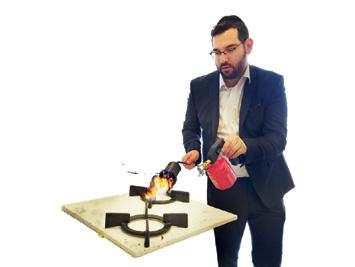
026431427
Be’er Tziporah a"h - Bottled Water Gemach
Walking down King George St. in Jerusalem and want a cold bottle of water?
Come help yourself to a bottle at 52 King George.
In loving memory of Yoni’s wife Tziporah a"h, a true Eishes Chayil, always full of chessed, kindness and laughter, and brought life and strength to so many people, that she touched!
She was like Aron, who loved peace and pursued peace.

Yoni thanks Hashem for having the opportunity of having Tziporah in his life, to learn of her caring, patience and happiness, to overcome her challenges. May Tziporah's Neshama be a light onto the world, in a time of darkness, and may her Neshama shine to Gan Eden. Yoni misses Tziporah with tears in his eyes, as Hashem gave him a gift, a crown jewel, now he returns her to Hashem. With thanks and Toda. Love, Yoni
To help refill the supplysend tax deductible donations for Be’er Tziporah a"h Bottled Water Gemach to Chabad of RechaviaRabbi Yisroel Goldberg email
Rabbi@JerusalemChabad.org
02 800-1717
www.JerusalermChabad.org/DonateShekels


56 TORAH TIDBITS 1557 / PEKUDEI
בוט יכ 'הל ודוה
kitchen kashering
ENGLISH SPEAKING LAW FIRM Orit Madar, Adv. Family Law and Mediation Divorce, Child support, Custody Inheritance & Wills Yariv Madar, Adv. Bodily Injuries, Medical Malpractice Civil Litigation 10 Hillel St , Jerusalem | 36 Dam hamkabim st , Modiin 02-6255592, 050-3202909 Madar@netvision net il !החמשב םיברמ רדא סנכנשמ Nahafochu! Turn their despair into hope and happiness! See What We Do and to Donate: www.Yeshezra.org Bank transfer: Mercantile (17), Branch 642, A/C 79747843 Send Asmachta for tax receipt Checks: “Yesh Ezra,” POB 31476, Romema, Jerusalem Credit Card: Sara – 077-820-0196. Sun/Mon/Wed (10:15am-2.45 pm) Inquiries: Menachem Persoff 050-570-1067 | menpmp@gmail.com HELPING THE HOME FRONT ASSISTING THE NEEDY










OU ISRAEL CENTER 57 FOLDING CHAIRS WWW.FOLDEES.CO.IL | 058-707-8181 • STYLE & COMFORT • MANY COLORS & DESIGNS • FAST DELIVERY HIGH QUALITY PREMIUM

HOLY SITES IN ISRAEL
RIVI FRANKEL
The Shul in Herodian
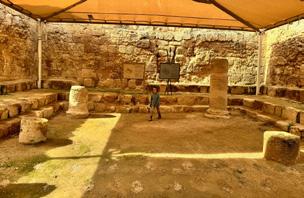
As we’ve discussed, archaeologist Ehud Netzer discovered what he believed to be the oldest ancient synagogue in Israel in the Hasmonean palaces in Yericho. Netzer initiated excavations there in 1968, early on in his career. He later spent over 30 years excavating Herodian, an artificially built mound, with an imposing fortress on top, designed and named by Herod, located just south of Jerusalem, near Tekoa.
Despite Josephus’s description of the funeral procession at Herodian, many were skeptical of Netzer’s claim that Herod’s final resting place would be found at the site. Time and again, Netzer’s search came up empty-handed. After many seasons spent looking, in 2007 he finally found Herod’s tomb! Tragically, just three years later, Netzer passed away from injuries
sustained from an on-site accident.
One of the best-preserved sections of the fortress at Herodian contains the remains of an ancient synagogue. As opposed to the shul in Yericho, Netzer’s colleagues agreed with his identification of this room as a first century synagogue. However, we need to ask the same question that we did with the Yericho palace- why would Herod build a synagogue in his fortress? The answer… he didn’t!
Most experts say the shul was built in 66 CE by the Zealots, a Jewish rebel group who fought against the Romans during the Great Revolt. The rebels transformed an existing outdoor triclinium by adding plastered benches around three walls and four columns in the center. The columns are spaced at such a distance from one another that they are not able to support a roof; at most a sheet or tarp. It is also possible the columns were merely a design feature. These features, the layout of the benches and columns, create the typology for first century synagogues and can be seen in other archaeological sites, including Masada, another Herodian fortress captured and refitted by the Zealots.
In Herodian, the rebels built a mikveh adjacent to the shul, as was also the case at Masada. However, unlike Masada, when the Romans besieged Herodian in 71CE, a year after the Beit Hamikdash was destroyed, the Zealots surrendered and by doing so, survived.
Imagine the prayers of the rebels in that synagogue. The Temple’s destruction is fresh in their minds, fighting for the survival of Jews
58 TORAH TIDBITS 1557 / PEKUDEI
Photographed by Elisheva Ben Eliyahu
in their ancestral homeland. What energy was in this room almost 2,000 years ago?
Sixty-six years later Jews again fighting the Romans, during the Bar Kochba revolt, found themselves in the very same shul, as they used the fortress and its underground sys tems as a military post. Did their tefillot echo those of the rebels in the previous generation?
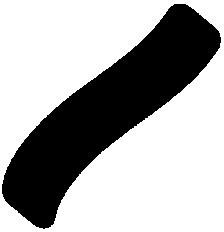
Today, the site lay in ruins, and was host to one of the most powerful Eicha readings I have ever attended. It’s as though the stones are infused with the prayers of a people yearning for peace and fighting for freedom. Our presence there is a testament to their fortitude and can inspire us in our own determination and tefillot.
Rivi Frankel is a sought after licensed tour guide in Israel for groups, families, and individuals of all ages. She is a Tanach lecturer, has run educational programing aroud the world, and currently lives in Jerusalem.


ד״סב
Israel’s poor since 1988. Now supporting thousands of hungry children and families across 93 cities in Israel. www.yadezra.net/purimsimcha · +972 2 540 0058 · +972 54 298 2096
Ezra V'Shulamit is tax deductible in Israel, USA , UK, Canada, Australia, France, & other EU Countries FEED AN ORPHAN IN ISRAEL THIS Help Orphans | Widows | Evacuees Purim *Money distributed to the poor on your Purim day
Feeding
Yad





www.israelrescue.org/ecards/

OU ISRAEL CENTER 61
UNITED HATZ AL AH UNITED HATZALAH UNITED HATZALAH UNITED HATZALAH

TORAH 4 TEENS
BY TEENS NCSY ISRAEL
 Adele Nemirov Beit Shemesh Chapter Director
Adele Nemirov Beit Shemesh Chapter Director
The Unexpected Architects
What should be the requirements for the chief architects of the Mishkan, Hashem’s resting place in the physical world?
The background of the two men chosen for these roles, Betzalel and Aholiav, seems unusual. Betzalel came from Yehuda, the tribe of kings and leaders - but the Gemara teaches that he was only 13 years old! His grandfather was Hur, the husband of Miriam who notably held up Moshe’s hands during the battle against Amalek. The Midrash explains that Hur was killed when he tried to stand up to the mob who was building the Golden Calf. To honor his self-sacrifice, Hashem appointed his young grandson to the esteemed position of chief architect of the Miskhan.
Much less is known about Aholiav, the second-in-command. He comes from Dan, the oldest child of Rachel’s handmaiden, Bilhah, and the last tribe to march in the desert. The Midrash teaches that there was no tribe greater than Yehuda and no tribe lesser than Dan; they were as opposite as can be.
The choice of these two individuals appears unexpected. Yet, their contrast highlights the power of their union: the Lubavitcher Rebbe explains that the Mishkan was built through the partnership of
these two figures, one illustrious and one humble, because we needed to involve the entire spectrum of the Jewish people to truly bring Hashem’s presence into our world.
This lesson has been seen time and again in the incredible unity that has come forward in recent months. The Jewish people have never been uniform, and we learn from this Parsha that in our diversity lays our strength. May our unity continue, increase and generate the greatest expression of Hashem’s presence with the Geula Shleima.

Akiva Fein 9th Grade Beit Shemesh
Finding Meaning in Pekudei: A Teen’s Perspective
Parshat Pekudei, the final Parsha of the sefer Shemot, may seem like a list of mundane details about the construction of the Mishkan and its keilim. Yet, even in these seemingly mundane details, there are profound lessons waiting to be uncovered, particularly for us as teenagers.
As adolescents, we often grapple with questions of purpose and meaning. We wonder where we fit into the grand scheme of things and what contribution we can make to the world around us. In Parshat Pekudei, we find guidance on how to find meaning and purpose in our lives.
One of the key themes of Pekudei is the importance of every individual’s contribution.
62 TORAH TIDBITS 1557 / PEKUDEI
Just as Am Yisrael was tasked with giving according to their ability to help build the Mishkan, each one of us has unique gifts and talents to offer. Whether it’s through our academic pursuits, creative endeavors, or acts of kindness, we all have something valuable to contribute to our communities and the world.
Moreover, Parshat Pekudei emphasizes the importance of attention to detail and precision in our actions. The meticulousness with which the Mishkan was constructed teaches us the value of diligence and care in everything we do. As teenagers, it’s easy to get caught up in the fast-paced world around us and lose sight of the importance of paying attention to the small things. Yet, it is often in the details that we find the greatest opportunities for growth and self-discovery.
Additionally, Parshat Pekudei reminds us of the importance of unity and collaboration. Am Yisrael worked together to build the Mishkan, demonstrating the power of collective effort in achieving a common goal. As teenagers, we can learn from this example by recognizing the strength that comes from working together with our peers, even when we have differing opinions or backgrounds.
In conclusion, Parshat Pekudei offers valuable lessons for teenagers seeking meaning and purpose in their lives. By recognizing our unique contributions, paying attention to detail, and working together with others, we can find fulfillment and make a positive impact on the world around us. As we continue on our journey towards adulthood, may we always strive to live with purpose and intention, following in the footsteps of those who came before us.
Shabbat Shalom

OU ISRAEL CENTER 63
Flying Soon? Travel with Confidence 1UniTravel - Medical Insurance at great prices Choose from multiple options 1unitravel.brokersnexus.com 1UniSim - Sims for USA and Worldwide Starting at $40 sales@1unisim.com Call 077-400-3199 or USA 718-715-0001 NACHI REALTY 054-461-3943 New Price - Rechavia Ground floor completely accessible, spacious & airy, 4 rooms, 10m mirpeset, parking, tons of potential, 2 entrances so the 3rd bedroom can be used as a clinic /office or studio unit. 3.97m shekel For Rent in Rechavia Rashba street, 2 rooms, 50m, 1.5 bathrooms, mirpeset, small building, 12 stairs up. available from April. 5670 NIS/month For Rent in Katamon 30m studio on Bustani street, ground floor, small garden, for independent people over 55. 3500nis/month incl va'ad bayit & heat.


The
above should
be misconstrued as
advice,
advice,
recommendation,
an opinion
advisability of
products of
is
the client's
it
given by qualified professionals. Maximize your giving with an Israeli donor-advised fund. Give directly to any Israeli nonprofit Get an American or Israeli tax-deductible receipt Grow your impact with tax-free investments For more information, email us at platinum@jgive.com or scan the QR code:
not
tax
legal
a
or
regarding the
participating in financial
any kind or type, including but not limited to participation in donor-advised funds (DAF). The above
not meant to be a substitute for personal advice tailored to
needs, nor does
take the place of advice

























 FROM THE DESK OF RABBI MOSHE HAUER OU EXECUTIVE VICE PRESIDENT
FROM THE DESK OF RABBI MOSHE HAUER OU EXECUTIVE VICE PRESIDENT
 12 TORAH TIDBITS 1440 / CHAYEI SARA 5782
12 TORAH TIDBITS 1440 / CHAYEI SARA 5782


















































 BY RABBI NACHMAN (NEIL) WINKLER Faculty, OU Israel Center Rabbi Winkler's popular Jewish History lectures can be viewed by visiting the OU Israel Video archive: https://www.ouisrael.org/video-library
BY RABBI NACHMAN (NEIL) WINKLER Faculty, OU Israel Center Rabbi Winkler's popular Jewish History lectures can be viewed by visiting the OU Israel Video archive: https://www.ouisrael.org/video-library



 Izzy Leizerowitz CEO & LICENSED ISRAEL BROKER
Izzy Leizerowitz CEO & LICENSED ISRAEL BROKER







































 BY RABBI EZRA FRIEDMAN Director, The Gustave & Carol Jacobs Center for Kashrut Education
BY RABBI EZRA FRIEDMAN Director, The Gustave & Carol Jacobs Center for Kashrut Education









 BY RABBI MOSHE TARAGIN R am, Yeshivat Har Etzion
BY RABBI MOSHE TARAGIN R am, Yeshivat Har Etzion

















 Yehoshua Looks, Esther Eisenberg,
Yehoshua Looks, Esther Eisenberg,





 EDITOR, TORAH TIDBITS
EDITOR, TORAH TIDBITS RAV, THE JERUSALEM SHUL - BAKA, JERUSALEM
EDITOR, TORAH TIDBITS
EDITOR, TORAH TIDBITS RAV, THE JERUSALEM SHUL - BAKA, JERUSALEM

























 Adele Nemirov Beit Shemesh Chapter Director
Adele Nemirov Beit Shemesh Chapter Director



